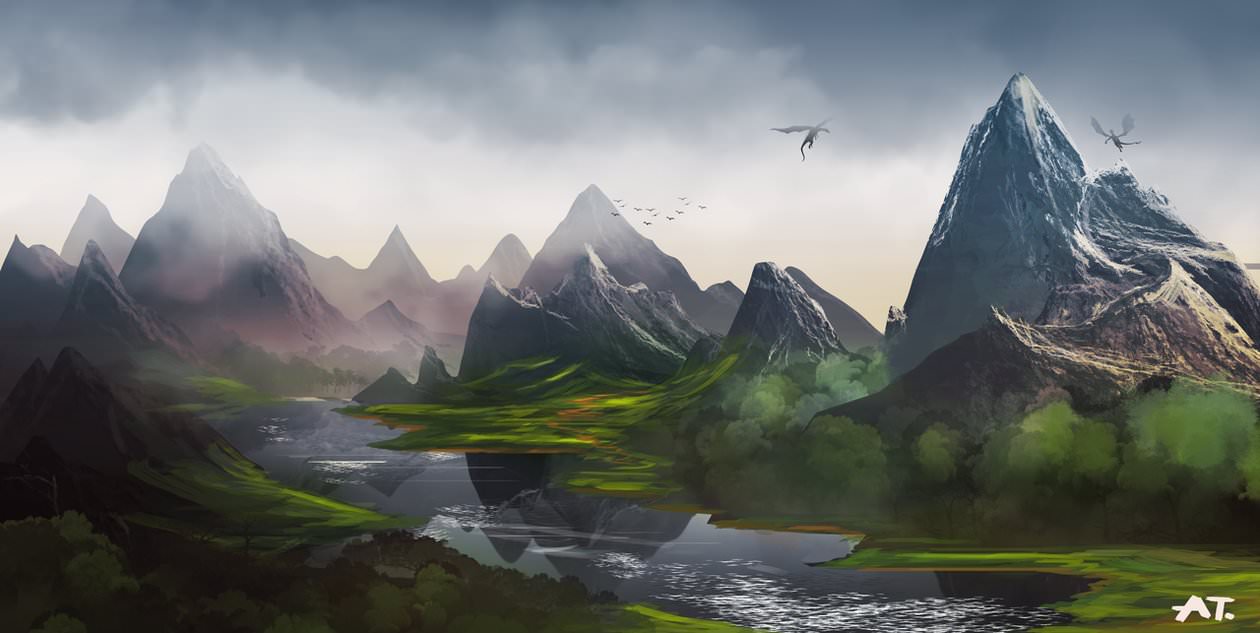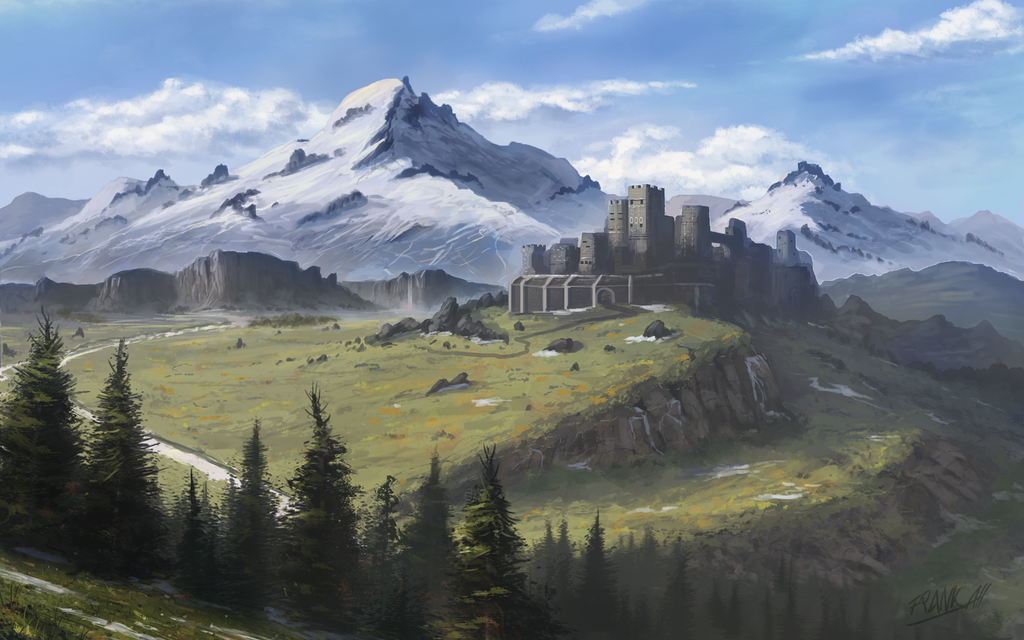
Table of Contents
Chapter 1: Background
Chapter 2: Character Creation
Chapter 3: Exploration Rules
Developed at Medieval Melodies by Jon Gazda.


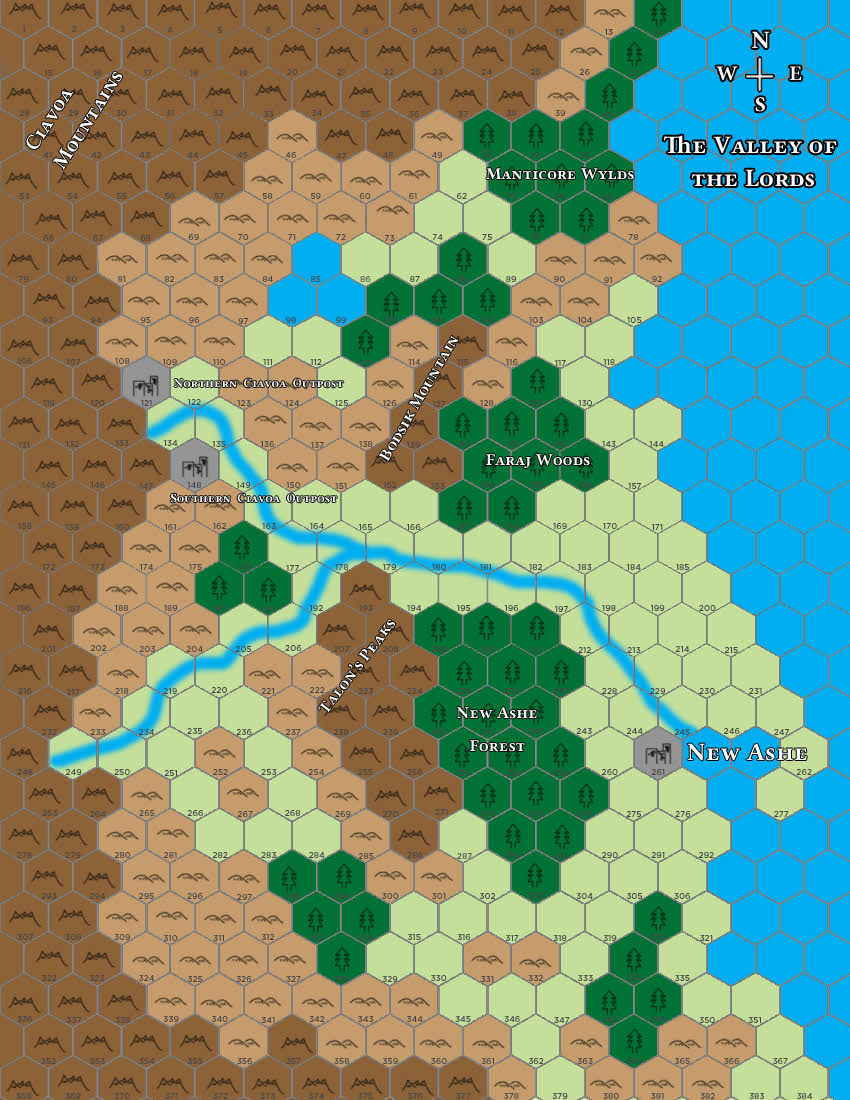
Chapter 1
Background
The History of The Valley of the Lords
Long ago, the human country of Ashtoria reached from the southern tips of the continent of Eiselon all the way to its northernmost reaches. The seat of power was located in the Valley of the Lords, a lush and fertile area protected by mountains and the ocean. Here in Ashe, the capital city, the Lords of Ashtoria ruled all the lands their armies could conquer.
The War of Sundering
Unsatisfied with their current holdings, the Lords of Ashtoria decided to press into the mountains dividing the continent. They hoped to bypass the military might of the growing Republic of Khoomes while expanding their borders and clearing out the dangerous creatures in their way.
Their preliminary scouts established an outpost at the edge of an inland sea, but shortly afterwards they came under attack by Orcish forces. Their numbers quickly multiplied, as the Orcs poured out of their mountain homes and destroyed the supply lines established by Ashtoria. Hungry for blood and flesh, the Orcish armies followed the Ashtorian scouts back to the Valley of the Lords.
Though the Ashtorian armies were strong, the Orcs had the advantage of ferocity and numbers. They fought relentlessly, driving through the Ashtonian lines as the war stretched over several years. By the time the Orcs had finished, they had driven over the city of Ashe and burnt it to the ground. Their pillaging extended all the way through the Valley of the Lords and only stopped when they reached the ocean.
The country of Ashtoria had been sundered, divided in two by the battle. The Northern half was quickly overtaken by the Republic of Khoomes, their bestial legions clearing out the stragglers of the Ashtorian army. The humans remaining in the area gathered in towns on the coast, adding to their size and eventually founding the cities of Dagos and Porayvon.
Meanwhile, the Southern half continued to be hemmed in by the Orcish forces, until finally the Ashtonian armies found relief. They retreated into a swampland where their enemies were unable to follow them or fight well. The most populated city, Wrighthame, was claimed as the new capital and renamed Ashwright.
The new borders were defined by the edges of the swampland and the reach of the army's protective patrols. Humbled by their defeat, the Last Lord named the new country Ashlen.
The World After the War
The people of Ashlen were desperate and destitute. Unable to set out beyond the borders of their lands, they established a coastal trading post, Thorpes. With this they could trade with Dagos and Porayvon, but also with the distant nation of Garlancia by sailing around the southern half of the continent.
As their prospects slowly increased, they received unexpected but much-welcomed aid from Dwarven travelers coming ashore from Strofeuwin. The dwarves had enjoyed trade with the Lords of Ashtonia, and were happy to help Ashlen build its defenses and reclaim the swampland. They established the Dwarven city of Duzag Kar, and heavily fortified the borders of Ashlen with walls and dwarven forces.
For many generations, the humans of Ashlen were content to sit behind their walls. The Orcs could not break through, nor could they extend their borders. After some time, the Orcs simply stopped trying, retreating to their newly claimed valley.
The Bastard's War
For around 500 years, the people of Ashlen slowly rebuilt their society. The walls remained, becoming more fortified over time. Each generation became more bold, less content with hiding from the Orcs. Finally, after calming a near-revolution, the royalty of Ashwright elected to go to war once more.
The war would last a full decade, with the Orcs taking strategic hold of the nearby Isle of Grey and inciting full-scale assaults upon the southern walls of the country.
Finally, after years of stalemate, the Orcish forces on the Isle of Grey were ousted, allowing supplies and soldiers to pour in from Dagos and Porayvon. The soldiers of Ashlen pressed outward, beating back the Orcish forces and reclaiming land not held by their people for centuries.
The greatest victory was claimed by general Leon Manus. In a bold and brilliant battle, he retook the ruined city of Ashe and drove the Orcs from their stronghold in the Valley of the Lords. Without such a strategic location to operate from, the Orcs pulled back into the mountains to the West.
Scholars and historians claim that this would be seen as the final turning point of the war, when the forces of Ashlen were able to claim their victory. The next few months consisted of routing orcs from their hiding holes and driving them back into the Ciavoa Mountains.
Now, the Valley of the Lords has been reclaimed and the city of New Ashe has been established, but there is much history and treasure in the Valley to claim for Ashlen. A new time of exploration has begun!
Ashlen Calender
The Ashlen year was adopted from Garlancian traders who brought goods to them in their time of great need. It consists of 26 months of 14 days each, followed by a single day to celebrate the Summer Solstice.
The names of the week are inspired by an old Dwarven myth, and are Mornday, Truesday, Wenjasday, Thrazday, Fharday, Satisday, and Solday. Each month has two weeks, which delineate the days. For example, the 3rd day of the month is First Wenjasday, and the 11th day is Second Thrazday.
| Month | Events and Holidays |
|---|---|
| Sunrise Moon | Summer Begins |
| Buck Moon | |
| Storm Moon | |
| Red Moon | Celebration of the Elders |
| Wheat Moon | |
| Hunter's Moon | |
| Harvest Moon | Autumn Begins |
| Blood Moon | Remembrance Day |
| Cold Moon | |
| Long Moon | |
| Dark Moon | |
| Old Moon | Chestnut Day |
| Winter Festival Moon | Winter Solstice Festival |
| Sunset Moon | Winter Begins |
| Snow Moon | |
| Wolf Moon | Ashlen's Victory Day |
| Hunger Moon | |
| Crow Moon | Celebration of Children |
| Rain Moon | |
| Egg Moon | Spring Begins |
| Pink Moon | |
| Fish Moon | Lord's Day |
| Farmer's Moon | |
| Feast Moon | Feast of Fruit |
| Flower Moon | |
| Summer Festival Moon | |
| Summer Solstice | Summer Solstice Festival |
Holidays
The people of Ashlen have great reverence for strength and resourcefulness. Their holidays reflect that, with a few others borrowed from their Garlancian allies.
- Celebration of the Elders: This holiday on the First Fharday of Red Moon honors those who have attained wisdom and experience through their long years. Those who have served in the Ashlen military and survived their experience are afforded additional honor. The Celebration usually includes time spent with family and a small shared meal of some kind.
- Remembrance Day: The Second Mornday of Blood Moon, Remembrance Day honors those who have fallen in battle, or were killed while defending the walls of the country. Graveyards are filled with somber gifts and small parades on this day, and children are encouraged to tell ghost stories as a way of keeping the legends of Ashlen alive.
- Chestnut Day: A favorite holiday among the young and old alike, this marks the First Solday of Old Moon, a day for boiling and roasting chestnuts by the hearth. A traditional story told on this day is of a young girl who was starving on the streets of a city. She is taken in by a kind family and offered chestnuts, but the family had not boiled the nuts long enough and she passed away. She thanked them for their kindness even as she passed, but the story is often told as a fable of how good intentions are not enough to truly help another person.
- Winter Solstice Festival: Only three weeks after Chestnut Day, the Second Solday of Winter Festival Moon is the Winter Solstice Festival, a day of gift-giving, feasting, and swordmaking. The tradition came from long ago, when, in order to save a city from Orcs, the smiths were forced to work through the night of the festival to have swords ready for their soldiers. Ever since, children make straw swords with their parents, and smiths enjoy a robust surge in sales.
- Ashlen's Victory Day: The most recently commemorated holiday. the First Thrazday of Wolf Moon celebrates Leon Manus' victory in reclaiming the city of Ashe. Widely considered the day Ashlen regained their history, Ashlen's people celebrate this holiday with parades and feasting.
- Celebration of Children: The Second Satisday of Crow Moon is a celebration of the precociousness of children. Adults are encouraged to join in games of Hide-and-Seek, Tag, and Smack-the-Dragon with their children, and sweet candies are distributed by a hooded old man with elk horns. In Ashlen, he is known as Gawasson, and is known to only give candy to good children.
- Lord's Day: The First Solday of Fish Moon is Lord's Day, a day honoring the nobility. The King of Ashlen throws a parade, and people are encouraged to wear silly costumes. In the often-repressed country of Ashlen, the nobility encourages people to blow off steam and act wild when the festival arrives. Jesters and Bards are honored, and it's said that you could show your rear end to the king without consequence on this day.
- Feast of Fruit: Coinciding with the first harvest of fruit, The Feast of Fruit arrives on the Second Wenjasday of the Feast Moon. The holiday celebrates with fruit and feasting, but also with pinwheels and colored lanterns. The lanterns are often shaped like fruit themselves for the celebration.
- Summer Solstice Festival: This day is a
special day to praise Pelor, the God of the Sun
and Father of the Gods. It isn't considered a part
of any particular month, but the month leading up
to it is almost always used to prepare for the festival.
Lately, the festival has been subdued due to efforts
going to the war, but the people of Ashlen are looking forward to this year's festival. With the war over, it promises to be the biggest festival the country has
seen in years.
The Gods & Religion
There are many gods that are worshipped in Ashlen. Some were worshipped by the original Lords of Ashtonia, some were brought to them by trade, and yet others are local Gods worshipped long before humans lived here.
Pelor, god of the sun and healing
Alignment: Neutral Good Domains: Light, Life
Pelor is the god of the sun and healing. His worship is found across Ahneria, and Ashlen is no exception. When Garlancian traders arrived in Ashlen, they were delighted to find their God was also loved here. Pelor is a popular choice among clerics of Ashlen, but those who worship Pelor often lament violence and war, and use their gifts to heal, not fight. People in Ashlen often pray to Pelor at dawn and dusk, to see them through the day and night respectively.
Heironeous, god of chivalry and war
Alignment: Chaotic Good Domains: Forge, War
A God worshipped since the days of the Ancient Lords of Ashtonia, Heironeous has always watched over the Ashlen people. A common patron of soldiers, and those who watch over them. It is said that wearing a symbol of lightning grants a soldier Heironeous' favor, making the lightning bolt a common symbol on the armor of Ashlen soldiers.
The Raven Queen, goddess of death and the afterlife
Alignment: Neutral Domains: Grave, Death, Knowledge
The uncaring Goddess of Death, the Raven Queen decides if a soul has proved itself worthy in life to pass on to the proper afterlife. All of Ashlen's people worship the Raven Queen, but only invoke her name when praying for a merciful death or the swift passing of a sick loved one. Children in Ashlen believe the Raven Queen sends shape-shifting angels to judge the unworthy, and are cautious around anyone who claims to be something they are not.
Moradin, dwarf god of creation
Alignment: Lawful Good Domains: Forge, Knowledge
Ashlen boasts a large dwarf population, and Moradin is universally worshipped among them. One of the great creator Gods, it is said he molded the dwarves by his own hands. Those dwarves who devote themselves to Moradin's cause generally abhor fighting, as to fight is to risk marring their God's creation. They are more commonly found in the depths of Duzag Kar than on the battlefield.
Gruumsh, orc god of storms and war
Alignment: Chaotic Evil Domains: Tempest, War
Among the population of Ashlen, the most common race after humans and dwarves is the half-orcs. An unfortunate consequence of war, many of them come to Ashlen to join the country's efforts and renounce their heritage. But some still feel the call of the Orc God, and the will of the Gods is not something that can be ignored. Clerics of Gruumsh struggle to fit in to Ashlen society, and face an uphill climb to prove their loyalty to the cause.
Beory, goddess of nature
Alignment: Neutral Domain: Nature
Long ago, the people of Ashtonia retreated into the swamplands to hide from Orcish invaders. There, they found a shrine to Beory set into the trunk of a Swamp Chestnut Tree. Taking it as a sign of her favor, they bred the tree and began a cycle of harvesting chestnuts that continues to this day. And much like the tree, worship of Beory remains a part of Ashlen culture. She is prayed to before eating and at feasts, and her clerics devote themselves to maintaining the bounty of the land.


Olidammara, god of revelry
Alignment: Chaotic Neutral Domain: Trickery
Olidammara is the patron God of festivals and celebrations, and in Ashlen he is the protector of children. It is said he has an angel named Gawasson who appears as an elderly old man with elk horns, distributing candy to good children on the Celebration of Children. Though few adults actively worship Olidammara, there are plenty of prayers for him when it comes time for a festival.
The Shadow, god of the swamp's twilight
Alignment: Neutral Evil Domains: Death, Nature
Considered a superstition by most, The Shadow is a minor deity that has lived in the swamps of Ashlen for longer than any mortal. He appears only at twilight, and is said to snatch up children who are not praying to Pelor for the night. In truth, The Shadow only hates those who disturb the swamp at twilight, which most people don't due to their nightly prayers. His favored creatures are blights, and the Gulthias Tree is an alter to him. He sends his minions to attack those who find his disfavor.
Bahamut, dragon god of good
Alignment: Lawful Good Domains: Life, War
Though not commonly worshipped in Ashlen, he is prayed to for protection from the Dragons that dwell in the mountains surrounding the country. His clerics are often travelers from distant lands that are welcomed happily to Ashlen.
Important NPCs & Factions
In this section you will find a list of the people and factions from across Ashlen that have an influence in the Valley of the Lords along with some information about their goals, methods, and leadership.

The Ashlen Army
Leader: Major Arthur Wyrmsmiter, Dwarven military officer
After fighting his way to victory, General Leon Manus ordered the army to continue to clear out the Valley of the Lords and establish a new set of border walls along the mountain footholds. Major Arthur Wyrmsmither was chosen for the task, and has devoted himself to building fortifications, leaving the exploration and clearing of the valley to other factions. Though they are well-funded, they are racing against time and hoping that the Orcs don't slip through their net.
The Army itself consists of battle-hardened soldiers who care more about achieving victory than doing so honorably. They stop short of breaking the laws of Ashlen, however, because doing so would result in expulsion. New recruits often struggle to reconcile their lack of experience and untested morals in the face of opponents (and allies) who will win by any means necessary, so there are many recruits that have elected to stay in New Ashe and take part in the job of clearing the valley of Orcs. The bulk of the army remains at the Western end of the valley, building and defending fortifications.
The Ashlen Army generally accepts Barbarians, Fighters, and Rangers. They provide the following services to all explorers in New Ashe, but non-members must pay twice as much as the normal price.
- Basic Smithing
- Weapon and Armor Purchase and Repair
- Combat Training

The White Roses
Leader: Whitikast Fourere, Human explorer
When the citizens of Ashlen heard that famed explorer Whitikast Fourere was planning to embark on an expedition to map the Valley of the Lords, there was plenty of gossip and excitement among the citizenry of Ashwright, as well as plenty of volunteers. But upon arriving in the city of New Ashe, the newly-christened adventurers discovered that their 'patron' was just as strapped for cash as they were. Whitikast had planned on making his employees find treasures and taking a percentage when they pawned them off to the other factions.
After calming down the angry and well-armed adventurers, Whitikast came up with a deal. He would use his charisma and connections to secure buyers and suppliers in New Ashe, while the adventurers would have free reign over the Valley. A simple percentage of goods found was the only requirement to using Whitikast's services. Though it meant Whitikast wouldn't be personally joining them on adventures, the explorers agreed to the terms of the deal, and the White Roses were born.
The White Roses accept any member among their ranks, but generally lean towards Bards, Rogues, and Sorcerers. Whitikast will purchase any item that the other factions won't take, including monster parts, nonmagical relics, and rare plants or insects. However, non-members will only receive 25% of the item's value when selling it, while members can sell items for 75% of their value.

The Church of Pelor
Leader: Bishop Wilhelm Vargus, Human missionary
After the war ended, the Church of Pelor was the first faction to arrive on the scene. In the city of New Ashe, they established a sanctuary for injured soldiers, as well as a place of worship for Pelor, Heironeous, Beory, Moradin and the Raven Queen. The Church has precious few members to support their work, and their efforts are heavily focused within the protective walls of New Ashe.
Bishop Wilhelm, however, has heard news of villages in the Valley that chose to submit to Orcish rule rather than be slaughtered. Though these settlements are not likely to be composed of humans, he has commissioned a small number of clerics to reach out to these places and provide aid if needed. If a member of that community wishes to join the cause, all the better.
The Church of Pelor accepts those who have a holy mission in the Valley of the Lords, including Clerics, Paladins, and Druids. The Church provides the following services to all explorers in New Ashe, but non-members must pay twice as much as the normal price. Additionally, if a spell requires material components, the explorer must purchase or provide them.
- Cleric Spellcasting Services (See table below)
- Holy Water and Holy Symbols
- Healing Potions
Cleric Spellcasting Services
| Spell Level | Cost | Restrictions |
|---|---|---|
| 1st | 10 gp | None |
| 2nd | 40 gp | Member |
| 3rd | 90 gp | Member |
| 4th | 210 gp | Cleric of Pelor |
| 5th | 500 gp | Cleric of Pelor |
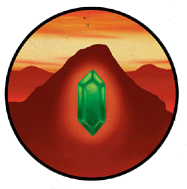
The Stone Scholars of Duzag Kar
Leader: Mage Adept Palma Bonewhistle, Dwarven Transmuter
After the Ashlen victory, the Dwarves of Duzag Kar sent a small contingent of Stone Scholars to the Valley to appraise it for historical, magical, and mineral value. Palma Bonewhistle, a skilled wizard with a sharp eye for gemstones, lead the Stone Scholars to New Ashe, where they established a small outpost and library for research purposes. Her dwarves aren't the most combat-ready bunch, so they prefer to travel with companions from other factions.
The Stone Scholars are also the best people in the Valley to appraise and buy items of historical value, though they are more familiar with Dwarven history than human. To remedy this, Palma has been more lenient about accepting humans and even half-orcs into the ranks of the Stone Scholars. If she didn't there'd barely be enough of them to call them a faction!
The Stone Scholars are dedicated to learning and knowledge, and generally accept Monks, Warlocks, and Wizards into their ranks. They provide the following services to all explorers in New Ashe, but non-members must pay twice the normal price.
- Magic Item Identification and Selling
- Magic Item Purchasing and Crafting
- Magic Training

The Shattered Sword Tribe
Leader: King Baggruk Neckbiter, Lord of the Orcs
The Shattered Sword tribe, until recently, was the dominant faction in the Valley of the Lords. They hunted game, threatened the locals, and lived without fear. That is, until Leon Manus came knocking on their door.
In a matter of months, King Baggruk had lost his stronghold, most of his army, and his position in the Valley. He pulled back to the Ciavoa Mountains to save what soldiers he could, and hopefully mount a counter-attack. The mountains have not provided the same verdant resources and strategic protection that the Valley did, but his army is still slowly recuperating. He has not forgotten his defeat, nor the human that dealt the blow.
Many of the Shattered Sword are still wandering the Valley, either left behind or having snuck back in past the Ashlen Army's border. They remain a threat to explorers searching the valley.
The Shattered Sword Tribe is an evil faction and does not tolerate explorers.
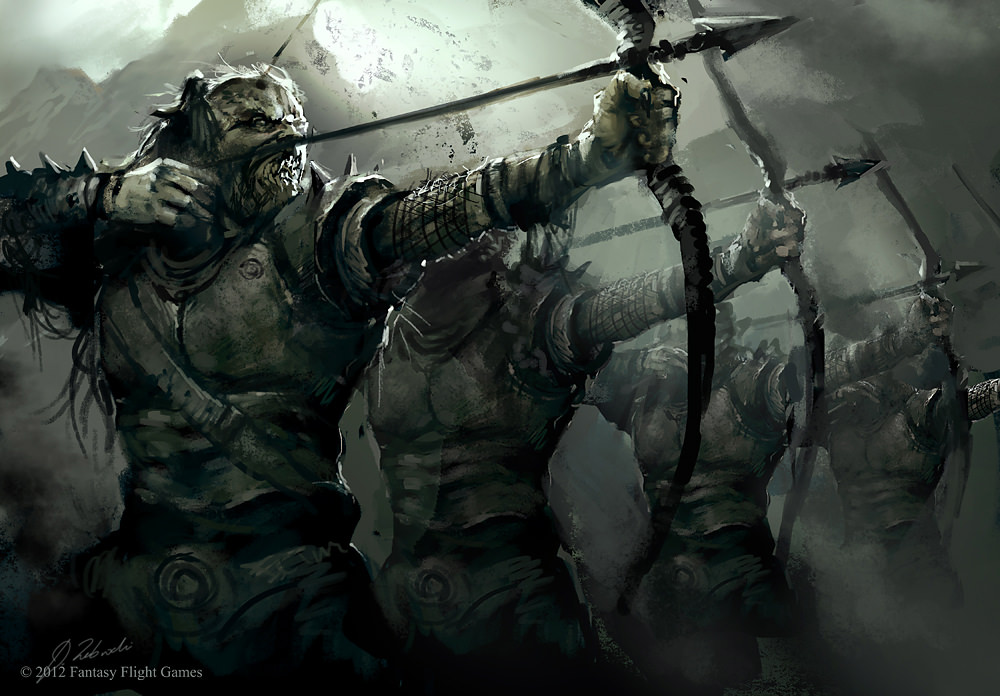


Chapter 2
Character Creation
Quick Character Creation
To create a character in the Valley of the Lords, please use the following steps:
1. Choose a Background
Your choice of background can affect the race, faction, and class of your character.
Backgrounds in The Valley of the Lords
| Background | Restrictions |
|---|---|
| Acolyte | Church of Pelor |
| Anthropologist | Not Ashlen Army |
| Archaeologist | Dwarf/Human, Stone Scholars |
| Charlatan | Not Ashlen Army |
| City Watch | Ashlen Army |
| Clan Crafter | Dwarf, Stone Scholars |
| Cloistered Scholar | Dwarf, Stone Scholars |
| Courtier | None |
| Criminal | White Roses/Ashlen Army, No Wizards, No Heavy Armor |
| Entertainer | None |
| Faction Agent | Any Faction |
| Far Traveler | Rare Race |
| Folk Hero | None |
| Guild Artisan | Rock Gnome, Stone Scholars/Ashlen Army |
| Haunted One | Cursed Race or Trauma |
| Hermit | Not Dwarf/Human |
| Inheritor | Human, Any Faction |
| Knight of the Order | Ashlen Army |
| Mercenary Veteran | White Roses |
| Noble | Dwarf/Human |
| Outlander | Firbolg/Aarakocra/Half-Orc |
| Sage | Stone Scholars |
| Sailor | Ashlen Army |
| Soldier | Ashlen Army |
| Urban Bounty Hunter | Ashlen Army |
| Urchin | Any Faction |
| Shattered Sword Tribe Member | Half-Orc, No Faction |
| Ashwright Noble | Human, Bard/Fighter, CHA 18 |
2. Choose a Race
Most adventurers in the Valley are humans and dwarves (both hill and mountain variety). Less-common races include Rock Gnomes, Half-Orcs, and Goliaths.
If you wish to be a different race, you must provide justification for your character's presence in New Ashe. See Sample Justifications for examples.
3. Choose a Class
Classes are well-defined in the Valley of the Lords, and not available to all. If a subclass is not listed below, there is nobody in Ashlen or the Valley that is able to train you in the skills necessary for that subclass.
Classes in the Valley of the Lords
| Class | Restrictions |
|---|---|
| Barbarian: Path of the Ancestral Guardian | Human |
| Barbarian: Path of the Berserker | None |
| Barbarian: Path of the Zealot | Church of Pelor |
| Bard: College of Valor | Not Dwarf, Not Stone Scholar |
| Bard: College of Whispers | Far Traveler |
| Cleric: Forge | Church of Pelor |
| Cleric: Grave | Church of Pelor |
| Cleric: Knowledge | Church of Pelor |
| Cleric: Life | Church of Pelor |
| Cleric: Light | Church of Pelor |
| Cleric: Nature | Church of Pelor |
| Cleric: Trickery | Church of Pelor |
| Cleric: War | None |
| Druid: Circle of the Land | None |
| Druid: Circle of the Moon | Firbolg, WIS 19 |
| Fighter: Banneret | Soldier/Knight of the Order |
| Fighter: Battle Master | Soldier/City Watch |
| Fighter: Cavalier | Noble/Ashwright Noble/Knight of the Order |
| Fighter: Champion | Not Noble/Ashwright Noble/City Watch/Knight of the Order |
| Monk: Way of the Kensai | None |
| Monk: Way of the Open Hand | Elf/Half-Elf |
| Paladin: Oath of the Ancients | Not Human/Dwarf |
| Paladin: Oath of Devotion | None |
| Paladin: Oath of Redemption | Dwarf |
| Ranger: Beast Master | None |
| Ranger: Hunter | None |
Classes in the Valley of the Lords (con't)
| Class | Restrictions |
|---|---|
| Rogue: Assassin | None |
| Rogue: Scout | None |
| Rogue: Swashbuckler | White Roses |
| Rogue: Thief | None |
| Sorcerer: Divine Soul | White Roses |
| Sorcerer: Shadow Magic | White Roses |
| Sorcerer: Wild Magic | White Roses |
| Warlock: The Fiend | Stone Scholars, Devil Patron |
| Warlock: The Great Old One | Stone Scholars |
| Warlock: The Hexblade | Stone Scholars, Raven Queen Patron |
| Wizard: Abjuration | Stone Scholars |
| Wizard: Conjuration | Stone Scholars |
| Wizard: Divination | Stone Scholars |
| Wizard: Enchantment | Stone Scholars |
| Wizard: Illusion | Stone Scholars |
| Wizard: Transmutation | Stone Scholars |
| Wizard: War Magic | Stone Scholars |
4. Choose a Faction
Based on your background, race, and class, you may already have a faction you must select, or certain factions you might be barred from. If you are not required to join a faction, you may choose to be an independent adventurer in New Ashe. However, you will not gain the benefits of membership in a faction.
Factions in New Ashe
| Faction | Leader |
|---|---|
| The Ashlen Army | Major Arthur Wyrmsmiter |
| The White Roses | Whitikast Fourere |
| The Church of Pelor | Bishop Wilhelm Vargus |
| The Stone Scholars of Duzag Kar | Mage Adept Palma Bonewhistle |
5. Determine Ability Scores
Generate your characters ability scores using one of the following methods.
Standard Array
This is the recommended method for creating a character. Assign the following numbers to each of the ability scores at your discretion: 15, 14, 13, 12, 10, 8. Then, apply racial modifiers to complete your ability scores.
Point Buy
If you'd like more variety in your character, you can use the point buy system to customize your ability scores.
You have 27 points to spend on your ability scores. The cost of each ability score is shown on the Ability Score Point Cost table. Select six numbers from the table, using your points to purchase scores until you have enough. Then, assign those numbers to ability scores at your discretion. Finally, apply racial modifiers to complete your ability scores.
Ability Score Point Cost
| Score | Cost |
|---|---|
| 8 | 0 |
| 9 | 1 |
| 10 | 2 |
| 11 | 3 |
| 12 | 4 |
| 13 | 5 |
| 14 | 7 |
| 15 | 9 |
Roll Four Drop Lowest
This option is available if you are making your character with a Dungeon Master present. Roll 4d6 and record the total of the three highest values. Do this six times, and assign those numbers to ability scores at your discretion. Finally, apply racial modifiers to complete your ability scores.
6. Describe Your Character
Write down any significant descriptors of your charater, including height, weight, and appearance.
Select two Personality Traits, an Ideal, a Goal, and a Flaw for your character. See Inspiration, Goals, & Character Growth for more information on these attributes, and how your character can use them.
Finally, your character starts their journey with Inspiration.
7. Choose Equipment
Your character begins with the equipment listed in their class and background. Your equipment was provided to you by your faction, or consists of personal items you have gathered or inherited over time.
If, at character creation, you can cast a spell that would require a costly material component, you have the appropriate materials to cast that spell. If the material components are consumed upon casting the spell, you have enough to cast the spell three times.
For example, if you are a first level Wizard that can cast Chromatic Orb and Find Familiar, then you begin the game with 30 gp worth of charcoal, incense, and herbs, and one 50 gp diamond.
At higher levels, you must seek out the material components to cast a spell if they are costly or consumed by the spell. The Stone Scholars and Church of Pelor are good resources for such materials.
8. Find an Adventure
Check the listing of available adventure sites, find a group of people interested in exploring it, and embark on your very own adventure!
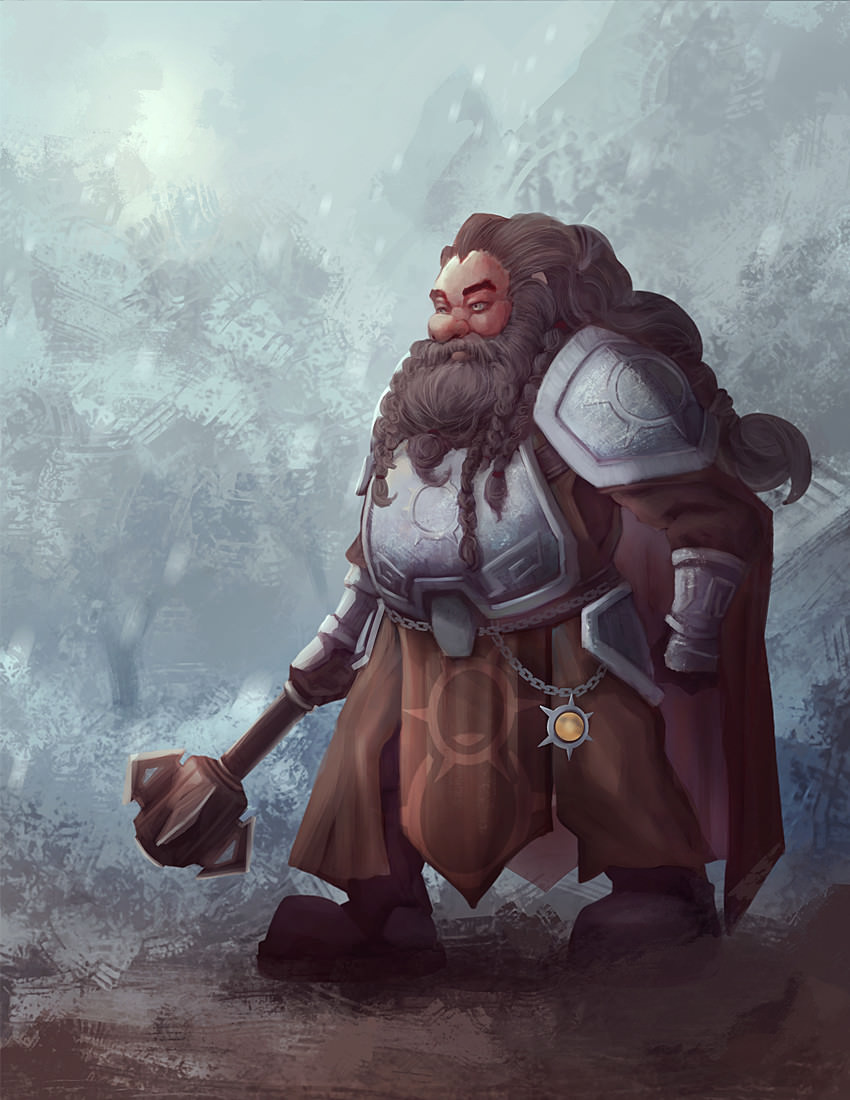

The Races of New Ashe
The Ashlen is a country ruled by humans and dwarves, and the population demographics reflect that.
Common Races
- Human
- Dwarf (hill, mountain)
Uncommon Races
- Gnome (rock)
- Half-Orc
- Goliath
In the city of New Ashe and along the Western border, Humans and Dwarves receive a +2 bonus to Charisma ability checks made to interact with non-hostile NPCs. If an NPC's attitude towards the character changes as a result of a social interaction, the character may immediately begin using their bonus in conversation.
If a character is a Half Orc or not otherwise listed above, they receive a -2 penalty to Charisma ability checks made to interact with all NPCs in New Ashe and along the Western border. The people of Ashlen are still recovering and are mistrustful of outsiders.
Humans
Humans in New Ashe are driven by a sense of adventure and history. This was once the home of their ancestors, and they wish to reclaim it. Humans in Ashlen value resourcefulness, persistence, and camaraderie. There are approximately 1,500 humans in New Ashe, most of them soldiers and explorers.
The humans are ruled by King Darius V, who lives in Ashwright. He is considered a kind King, and exemplifies the values the people of Ashlen hold.
Dwarves
The Dwarves of Duzag Kar are a proud people, and they contributed greatly to protecting their homeland and human allies. Now, they are in the Valley of the Lords to further those causes, and share in the spoils that will surely come from digging up ancient ruins and historical sites. There are currently about 500 Dwarves in New Ashe, with many more assisting in border construction to the West.
The Dwarves have a small governing body known as the Hammerholders, who are selected from the wisest members of the most prestigious clans in Duzag Kar. The Hammerholders defer to King Darius V on matters of the state, but within the walls of Duzag Kar they are the final authority.
Sample Justifications
Here are some reasons an unusual race might be in New Ashe.
Animal Races can be outcasts or escapees from the Republic of Khoomes. The oppressive government there causes many to seek better places to live. Your background is Far Traveler or Hermit.
Tieflings, Aasimar, and Genasi can be humans affected by some sort of curse. Determine the nature of your curse, what caused it, if it can be broken, etc. Breaking your curse reverts your character to the variant human, which will be built to reflect the lingering effects of your curse. Your background is Haunted One.
Monstorus or Evil Races could have been adopted by humans, affected by a curse, or lost the memory of their original culture. Your background is Hermit or Haunted One.
Elves, Halfings, Dragonborn, and Forest Gnomes are likely travelers seeking gold or treasure in the Valley with little regard for the history there. Your background is Far Traveler.
Firbolg and Aaracokra have small villages in the Valley or the surrounding mountains, which have been oppressed by the Orcs. Your background is Outlander.
Rock Gnomes
A fairly uncommon sight in Ashlen, Rock Gnomes are nonetheless a driving force behind the metallurgical industry of the country. They usually don't prefer to actually do any fighting, and enjoy their positions as smiths and repairpersons. In New Ashe, they continue these duties, making and repairing weapons and armor for a small fee.
Half-Orcs
Though they aren't particularly rare, Half-Orcs are mistrusted and sometimes mistreated in Ashlen. The kinder citizens understand that they did not choose to be born, the crueler punish them for it. Still, Half-Orcs can find work among the more diverse and accepting populace of the trading city of Thorpes. They also make fine soldiers, which has brought many of them to New Ashe. There are currently around 200 Half-Orcs in the reclaimed city.
Goliaths
Visitors from the mountains, Goliaths are loved in Ashlen for their great strength. However, a stigma exists among humans and dwarves that Goliaths are less intelligent than the more common races. Most humans won't ever meet a Goliath Cleric or Wizard in their lifetime, and thus the prejudice persists. But Goliaths enjoy a friendly relationship with the population of Ashlen, and visit for supplies if the mountains are being particularly unforgiving. When it came time to go to war, some Goliaths joined the Ashlen Army, and they now reside in New Ashe.
Backgrounds in New Ashe
Though any background can describe an adventurer in the Valley of Lords, some are more common than others. Also, your background may immediately tie you to a particular faction within New Ashe.
Acolyte
(Player's Handbook Page 127) This background places you in the faction of the Church of Pelor. Even if Pelor is not the primary deity you worship, the Church is the largest organization of religious people in New Ashe, and you are most comfortable around them. The church is open to any sort of adventurer, but prefers Clerics and Paladins. If you do not know Dwarvish, Orcish, or Common from your race, select that as your language.
Anthropologist
(Tomb of Annihilation Page 191) This background does not require you to join a faction, but you cannot be a member of the Ashlen Army if you are an Anthropologist. You would be primarily interested in the culture of Orcs, Firbolgs, or Aarakocra, all of whom live in the Valley. Choose among them for your adopted culture and languages.
Archaeologist
(Tomb of Annihilation Page 192) This background places you in the Stone Scholars of Duzag Kar. You are likely a Dwarf or Human, looking for historical remains of the ancient Lords in the Valley. If you do not know Dwarvish, Orcish, or Common from your race, select that as your language. Adventuring classes that use magic are most common in the Stone Scholars.
Charlatan
(Player's Handbook Page 128) As a Charlatan, you are likely on the wrong side of Ashlen law. Thus, you would be drawn to the White Roses, and the promise of independence and treasure. Your False Identity is the persona you show to members of the Ashlen Army, while you reserve your true face for your close friends and confidantes.
City Watch
(Sword Coast Adventurer's Guide Page 145) You used to work as a guard in the city of Ashwright, and joined the Ashlen Army when the final push of the War began. If you do not know Common, Dwarvish, and Orcish from your race, select them as your languages. The office of Major Arthur Wyrmsmiter is considered a local outpost for the Watcher's Eye feature, even if the Major himself is rarely present.
Clan Crafter
(Sword Coast Adventurer's Guide Page 145) You must be a Dwarf to take this background. If you wish to be proficient in Carpenter's Tools, Mason's Tools, Smith's Tools, or Tinker's Tools, you are a member of the Stone Scholars. Otherwise, you don't have to choose a faction. Adventuring classes that use magic are most common in the Stone Scholars.
Cloistered Scholar
(Sword Coast Adventurer's Guide Page 146) As a cloistered Scholar you are a member of the Stone Scholars, and must be a dwarf. You personally know Mage Adept Palma Bonewhistle, and have access to her personal library of research materials. If you do not know Dwarvish, Orcish, or Common from your race, select them as your languages. Adventuring classes that use magic are most common in the Stone Scholars.
Courtier
(Sword Coast Adventurer's Guide Page 146) A courtier has little place in a war, which means you will need a good reason to be in New Ashe. The likely explanation is you were drafted into the Ashlen Army, or you wronged someone and signed up with the White Roses to flee Ashwright. As a Court Functionary, you can arrange meetings with the Faction leaders and often know gossip about their personal affairs. If you do not know Dwarvish, Orcish, or Common from your race, select them as your languages.
Criminal
(Player's Handbook Page 129) A criminal might come to New Ashe as escape or punishment. If it's a punishment, you are an unruly member of the Ashlen Army. If it's to escape, you likely joined up with the White Roses. Either way, your Criminal Contact will be Whitikast Fourere, leader of the White Roses and a man with his ear to the underbelly of society. Criminals rarely have the funds to access classes that wear heavy armor or use spellbooks.
Entertainer
(Player's Handbook Page 130) An entertainer has little place in a war, which means you will need a good reason to be in New Ashe. The likely explanation is that you signed up with the White Roses to seek adventure. Unfortunately, there is little time for music in the Valley, and unless you can gain the ear of one of the Faction leaders, your By Popular Demand feature will prove to be useless.
Faction Agent
(Sword Coast Adventurer's Guide Page 147) You are a member of a faction, and a trusted one at that. Each faction has a secret stronghold within their headquarters, and you are aware of where your faction keeps its secrets. If you do not know Dwarvish, Orcish, or Common from your race, select them as your languages. You also gain the appropriate skill for your faction.
| Faction | Skill | Secret Location |
|---|---|---|
| Ashlen Army | Intimidation | Arthur's Office |
| White Roses | Deception | Whitikast's Diary |
| Church of Pelor | Medicine | Wilhelm's Sanctuary |
| Stone Scholars | History | Palma's Library |
Far Traveler
(Sword Coast Adventurer's Guide Page 148) To use the Far Traveler background, you must be a member of a rare race. This includes the animal races, Elves, Halflings, Dragonborn, and Forest Gnomes. The language you speak is one from your homeland. The people of Ashlen and the Valley are still untrusting of those who are different than themselves. Most of the attention you receive will be negative.
Folk Hero
(Player's Handbook Page 131) Folk Heroes in Ashlen were likely drawn here as a part of the Ashlen Army or the White Roses, but this background does not require you to pick a faction. The War offered plenty of opportunities for common folk to step up and show their bravery, so your character likely became a Folk Hero a a result of the Orcish invasion. Your Rustic Hospitality won't do much good in New Ashe, but if you find villages or tribes in the Valley, they will recognize your charm.
Guild Artisan
(Player's Handbook Page 132) As a Guild Artisan, you are likely a Rock Gnome. If you wish to be proficient in Carpenter's Tools, Mason's Tools, or Tinker's Tools, you are a member of the Stone Scholars. Adventuring classes that use magic are most common in the Stone Scholars. Otherwise, you are a member of the Ashlen Army, which has need for craftsmen of all kinds. Your Guild Membership does not require a fee, but lacks the political power features. You can still gain shelter from your chosen faction. If you do not know Dwarvish, Orcish, or Common from your race, select one as your language.
Haunted One
(Curse of Strahd Page 209) To gain this background, you must be a Tiefling, Aasimar, or Genasi, or have undergone some sort of supernatural trauma. Haunted Ones can belong to any faction, but if an NPC is not a member of the character's faction, they will not provide the support granted by the Heart of Darkness feature. The people of Ashlen and the Valley are still untrusting of those who are different than themselves. As a Haunted One, you begin the campaign with 10 gp.
Hermit
(Player's Handbook Page 134) To gain this background, you cannot be a Dwarf or Human. If you do not know Dwarvish, Orcish, or Common from your race, select one as your language. Your discovery is related to a location in the Valley of the Lords that contains an item of great importance to you. Work with the DM to determine the name of the site and the reason it is important to you. The site will be placed on an undiscovered location on the map, and made available for delving once it is found.
Inheritor
(Sword Coast Adventurer's Guide Page 148) To gain this background, you must be human. Your Inheritance is something passed down through your family for generations. You are in the Valley of the Lords to seek the history of your Inheritance, which may lead to revelations about your character. If you do not know Dwarvish, Orcish, or Common from your race, select one as your language. Finally, you must be a part of a faction to research your Inheritance. If the item belongs to multiple categories (such as a magic sword), you may choose which faction you are a member of.
| Inheritance | Faction |
|---|---|
| Weapon or Armor | Ashlen Army |
| Religious Item | Church of Pelor |
| Magical Item | Stone Scholars |
| Any/Other | White Roses |
Knight of the Order
(Sword Coast Adventurer's Guide Page 151) A Knight of the Order is an elite member of the Ashlen Army. Their chosen skill is History. As a Knight of the Order, you have been discharged from active duty for some reason, the most common being age or injury. It isn't likely that you disgraced yourself, instead something forced you to give up your position. If you do not know Dwarvish, Orcish, or Common from your race, select one as your language.
Mercenary Veteran
(Sword Coast Adventurer's Guide Page 152) A Mercenary Veteran is someone with considerable skill who joined up with the White Roses, and was instrumental in settling the deal with Whitikast Fourere. You might have some friends from your previous company, but you've left for good and might as well make the most of it.
Noble
(Player's Handbook Page 135) To have this background, you must be Human or Dwarvish. You are part of the clans that make up the Hammerholders of Duzag Kar, or the child of a duke appointed by King Darius V. Unfortunately, here in the city of New Ashe there isn't much in the way of nobility. The closest you'll get is Major Arthur Wyrmsmiter if you are a Dwarf, or Bishop Wilhelm Vargus of the Church if you are human. If you do not know Dwarvish, Orcish, or Common from your race, select one as your language.
Outlander
(Player's Handbook Page 136) Outlanders are those who are intimately familiar with the Valley of the Lords. To use this background, you must be a Firbolg, Aarakocra, or Half-Orc that lived among the Orcs before the War. The language you choose must be related to your race, Orcish, or Common. Your Wanderer feature has been altered for the Exploration Rules. Outlanders can re-roll a random encounter when they become lost, but they must use the new roll. Also, their Supply Cost is reduced by 1 gp, to a minimum of 1, when traveling through the Valley.
Sage
(Player's Handbook Page 137) This background does not require you to join a faction, though you will likely align with the Stone Scholars. If you do, you have access to their public library materials for research purposes. If you do not know Dwarvish, Orcish, or Common from your race, select them as your languages. Adventuring classes that use magic are most common in the Stone Scholars.
Sailor
(Player's Handbook Page 139) As a sailor, you are a conscript of the Ashlen Army. It's unusual for Sailors to be so far inland, so you need a reason for leaving the naval division of the military. Your Ship's Passage feature is useless in New Ashe, but if you help the factions build a port, you could open up a supply route back down to the trade city of Thorpes.
Soldier
(Player's Handbook Page 140) This background places you squarely in the Ashlen Army. However, since most of the army is stationed at the Western end of the Valley, you need a reason that you are stationed in New Ashe. It could be that the ferocity of the Orcish army was too much, or you requested a position in the reclaimed city. Either way, you did not make it far up the military's ranks, because those who did wouldn't have to stay in the Valley.
Urban Bounty Hunter
(Sword Coast Adventurer's Guide Page 153) If you chose this background, you acted as a spy for the Ashlen Army. You weren't skilled in Urban espionage, but in tracking Orcish movements and intercepting information. Now, you've left that life behind, and you should think about why. It could be to get away from the Orcs, or it could be that you backed the wrong general before Leon Manus' victory. You might still be part of the Ashlen Army, but you don't have to be.
Urchin
(Player's Handbook Page 141) When you chose this background, you must select a faction that lifted you out of poverty. The Ashlen Army or Church of Pelor might have taken you in, or you could have joined the White Roses to find your own way to the top. You won't be able to use your City Secrets feature in the Valley, but if you begin an adventure in an ancient ruins, you can re-roll the random encounter once, but you must use the new roll.
Uthgardt Tribe Member (Shattered Sword Tribe Member)
(Sword Coast Adventurer's Guide Page 153) You must be a Half-Orc who lived with the Shattered Sword Tribe to take this background. You've given up this life for some reason, and that reason should be part of your character's story. If you take this background, you cannot join a faction. If you do not know Dwarvish, Orcish, or Common from your race, select one as your language. Also, your Supply Cost is reduced by 1 GP, to a minimum of 1, when traveling through the Valley.
Waterdhavian Noble (Ashwright Noble)
(Sword Coast Adventurer's Guide Page 154) You must be a Human Bard or Fighter with a Charisma of 18 or higher to take this background. You are a direct relative to King Darius V, in the Valley to pursue adventure and the history of your line. You must think of a reason you have been allowed to lead this lifestyle, such as being distantly in line for the throne or being disowned by your family. Additionally, due to the wilderness environment, you lack the Kept in Style feature, and instead gain the Retainer feature (Player's Handbook Page 136). Your retainers have the statistics of a Scout, without any attacks. Otherwise, they are the same as listed in the Handbook.
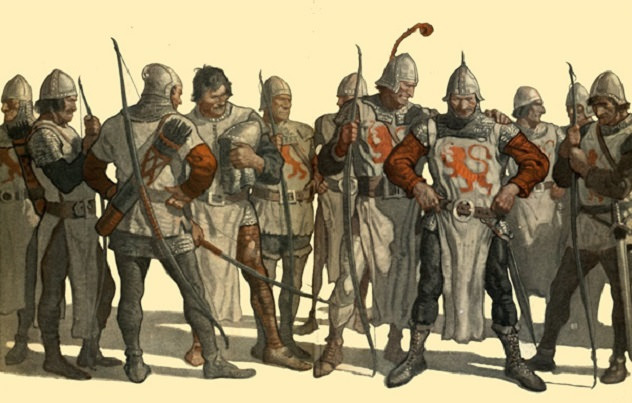

Inspiration, Goals, & Character Growth
The rules for Inspiration are being altered for this campaign. The original rules are in the Player's Handbook on page 125.
Character Traits
Your character has two Personality Traits, an Ideal, a Goal, and a Flaw. You don't have to select them from your background or based on your race, but it can be helpful to look at the suggested traits for ideas.
Personality Traits
Personality Traits indicate ways your character acts, speaks, or makes decisions. Choose two of them.
Ideal
Your character's Ideal is an idea that your character uses to define their internal ideas and the world around them. It should be something that can apply to many situations, but still be specific enough to guide your character when they have to make a difficult choice.
Goal
This trait replaces your character's Bond. A Goal is something your character wishes to accomplish. This should be something they need to work for, but it should remain attainable. This goal will be important for the inspiration system.
Flaw
This is a trait of your character that prevents them from reaching their goal or ideal. You Flaw should be something that can apply in many different situations, as it is also important to the inspiration system.
Inspiration
Every character begins their journey with a goal in mind. Your drive to pursue this goal is represented by inspiration. Your character gains inspiration at creation. If you have inspiration, you can expend it when performing an activity related to your Personality Traits, Ideal, or Goal. Spending your inspiration gives you advantage on the roll.
Once you spend your inspiration, you must use your Flaw to get it back. If you do not have inspiration, you can choose to take disadvantage on an activity related to your flaw. If you do so, you regain inspiration. You cannot regain inspiration any other way.
Reaching Your Goals and Updating Your Traits
At any time, you may choose to embark on a quest to directly pursue your goal. However, such quests will be difficult and test your character's Ideals and Flaws. If you complete the quest, you gain the Inspired feature. You regain Inspiration on a Short or Long Rest.
Goal Quests will generally be designed for characters of level 4 or 10. Once you complete your Goal Quest, you remain Inspired until you reach level 5 or 11. At that time, you must update your traits with a new Goal and a new Flaw, and you lose the Inspired feature. Your character has met their old Goal and overcome their old Flaw, so they must find something new to pursue. You may also choose to retire your character once they become Inspired.
| d100 | Goals in the Valley of the Lords |
|---|---|
| 01-03 | You seek the grave of your ancestors. |
| 04-06 | You owe someone money and need a big score. |
| 07-09 | You've got a personal vendetta against the Orcs. |
| 09-12 | You seek a fabled magic item from the Valley. |
| 13-15 | Someone got lost in the Valley, find them! |
| 16-18 | You hope to study the animals/plants in the Valley. |
| 19-21 | You're raising money to buy ship's passage home. |
| 22-24 | You seek a glorious death. |
| 25-27 | You are looking for a cure to your curse. |
| 28-30 | You are madly in love with another explorer. |
| 31-33 | You are working off your community service. |
| 34-36 | You hope to make your parent proud. |
| 37-39 | You are on a mission from your God/Patron. |
| 40-42 | You seek to hunt a particular kind of monster. |
| 43-45 | You wish to learn a certain piece of history. |
| 46-48 | You seek to domesticate a certain monster. |
| 49-51 | You wish to find passage to the Underdark. |
| 52-54 | You are on a mission from a noble or the king. |
| 55-57 | This is all part of a test from your master. |
| 58-60 | You hope to map the entire Valley. |
| 61-63 | You want the secret to immortality. |
| 64-66 | You hope to restore the ecology of the Valley. |
| 67-69 | You are running from a lawman in New Ashe. |
| 70-72 | You want to redeem yourself in a person's eyes. |
| 73-75 | An Orc stole something from you, get it back! |
| 76-78 | You want to advance ranks within your faction. |
| 79-81 | You seek a particular site within the Valley. |
| 82-84 | You seek to quell your nightmarish visions. |
| 85-87 | You hope to find an ancient tome or tablet. |
| 88-90 | You wish to convert some locals to your cause. |
| 91-93 | You wish to be accepted into a local tribe. |
| 94-96 | You want to be appointed nobility in New Ashe. |
| 97-99 | You send money back home for some reason. |
| 00 | You are here for a prophecy you must fulfill. |
Class Alterations, Limitations, & Suggestions
Due to the exploration rules and the nature of life in New Ashe, classes may be altered, limited, or more/less common than others. The Artificer and Mystic classes are not available.
Barbarians
Barbarians are common in Ashlen, due to the proximity of the mountains and the Goliaths. As a barbarian, you were likely taught the ways of combat by a Goliath, if you aren't one already.
Many barbarians choose to use their skills in the conflict between Orcs and Ashlen. Though most side with Ashlen, there are some who saw the humans as wrong for trying to take lands held by Orcs for centuries. If you wish to play such a barbarian, think about why you switched sides. You might have surrendered to Ashlen in the wake of Leon Manus' victory, and reside in New Ashe to find a place among your former enemies.
As a barbarian in New Ashe, you have access to the following subclasses:
Path of the Ancestal Guardian
(Xanathar's Guide to Everything Page 9) Your power comes from the spirits of the ancient Lords of Ashtonia. They might give you tasks to complete, or demand you respect their lands. Your Ancestral Protectors might care for you, or they might only wish to use you as a vessel for their own goals. You must be human to take this subclass.
Path of the Berserker
(Player's Handbook Page 49) You are a disciple of the Goliaths, or are a Goliath yourself. Your power comes from pure, unrestrained rage. Think about what the source of your rage could be. You might have lost everything in the War, or you might be driven by your goal to the point of madness.
Path of the Zealot
(Xanathar's Guide to Everything Page 11) Your power comes from the Gods, specifically Heironeous, God of Chivalry and War. Though you have great strength, you retain a code of honor that you follow. Your character might struggle to maintain this code when in a rage, or their rage could result in a religious fervor. You belong to the Church of Pelor faction.
Bards
There is only one Bardic College in Ashlen, and it is part of the noble houses of Ashwright. That's not to say you must be nobility to become a Bard, but you certainly need a reason you were able to join the College. You might have gotten a letter of recommendation, or perhaps a noble heard you playing in a tavern and knew you had talent.
Bardic magic is common among the nobility of Ashwright, but somewhat looked down upon by the Dwarves of Duzag Kar. They prefer tradition and frankness to the subtle politics of the Ashwright courts. A Bard of Ashwright might travel to New Ashe for glory, gold, or perhaps to prove something to a fellow noble. They will almost certainly be a member of the White Roses.
As a Bard in New Ashe, you have access to the following subclasses:
College of Valor
(Player's Handbook Page 55) You are a member of the Badic College of Ashwright. You might be here on a mission from the college, or for personal reasons. You cannot take this subclass if you are a Dwarf, and you cannot be a member of the Stone Scholars faction.
College of Whispers
(Xanathar's Guide to Everything Page 16) You are a Bard from a distant land, here to learn about New Ashe and establish a foothold for yourself in the political structure of the system. You claim to be a member of the Bardic College of Ashwright, taking private lessons or in a different class than the other Bards you meet. To take this subclass, you must be an Elf, Dragonborn, Halfling, Forest Gnome, or one of the animal races of Khoomes. Your background must be Far Traveler.
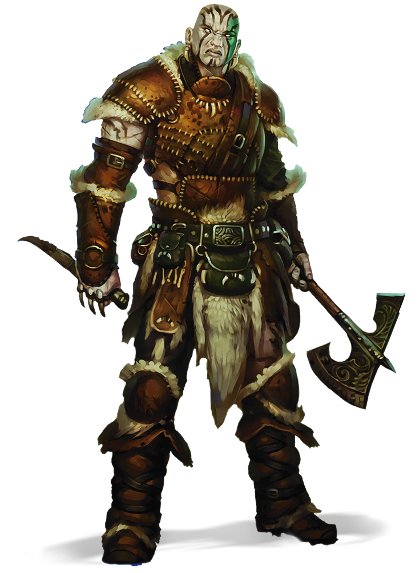
Clerics
You have been chosen by your Gods to assist in their cause and further their presence in the Valley. As a cleric, you are part of the Church of Pelor faction, even if the deity you worship is not Pelor. The faction's temple is the only place for you to procure Holy Water, Priest's Supplies, and religious services.
The Temple offers space for a multitude of faiths, and several domains. If a domain is not listed below, it isn't available for worship in New Ashe.
| Domain | God | Restrictions |
|---|---|---|
| Forge (XGtE pg. 18) | Heironeous | - |
| Forge (XGtE pg. 18) | Moradin | Dwarf |
| Grave (XGtE pg. 19) | The Raven Queen | - |
| Knowledge (PHB pg. 59) | The Raven Queen | - |
| Knowledge (PHB pg. 59) | Moradin | Dwarf |
| Life (PHB pg. 60) | Pelor | - |
| Life (PHB pg. 60) | Bahamut | Far Traveler |
| Light (PHB pg. 60) | Pelor | - |
| Nature (PHB pg. 61) | Beory | - |
| Trickery (PHB pg. 62) | Olidammara | - |
| War (PHB pg. 63) | Heironeous | - |
| War (PHB pg. 63) | Bahamut | Far Traveler |
If you are a cleric of Pelor, you will gain favor with the Church, and have direct access to Bishop Wilhelm Vargus. He can provide better religious services, such as casting the Raise Dead spell if he is brought a diamond of sufficient size.
If you are a cleric of Bahamut or Olidammara, you are nominally part of the Church of Pelor for the services they provide, but they do not have a space to worship your deity. If you break or lose your Holy Symbol, you will not be able to replace it within New Ashe.
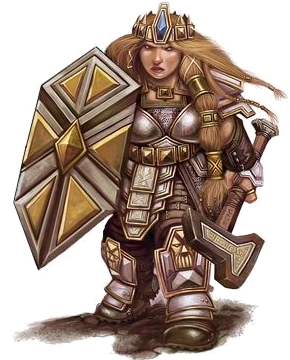
Druids
To become a druid, you must be a Firbolg or have trained under a Firbolg Druid. Druids are uncommon among the war-torn lands of Ashlen, and the same holds true in New Ashe.
Druids in New Ashe are caretakers of the Valley, doing their best to keep the spark of life alive as War has ravaged the land. A Druid might arrive in New Ashe to ensure explorers do not unduly infringe upon the land, or be working with the Church of Pelor as an emissary of Beory.
If you choose to become a Druid, you might gain access to the Goodberry spell. Due to the nature of the exploration rules, the function of the Goodberry spell has been altered. You can use Goodberry to reduce the Supply Cost of a day by 1 gp, to a minimum of 0 gp.
As a Druid in New Ashe, you have access to the following subclasses:
Circle of the Land
(Player's Handbook Page 68) This is the Circle that the Firbolgs teach, though they teach different spells based on where their tribe resides. They can teach Circle Spells associated with Forests, Grasslands, or Mountains. Your Firbolg Druid master might assign a specific quest to you, or simply task you with ensuring the newcomers to the Valley respect its ecology.
Circle of the Moon
(Player's Handbook Page 69) Every century or so, a child is born to the Firbolgs with exceptional Druidic ability. To take this subclass, you must be a Firbolg with a Wisdom score of 19 or higher. These Firbolgs have a spiritual connection to the Goddess of Nature, Beory. She will likely have a mission or task for you to complete, which would include you reclaiming the Valley after the War. When you reside in New Ashe, you are considered a member of the Church of Pelor, and can use its services.
Fighters
Fighters are incredibly common in Ashlen and New Ashe. The Bastard's War produced many soldiers, some of whom stood out from the rest by their skill or strategy. If you are a fighter, you are or were a member of the Ashlen Army.
Most of the Army is stationed at the West end of the Valley, meaning you will need a reason to be in New Ashe. You could have been reassigned, chosen to be discharged, or fled the army to operate under another identity. You might still use your Ashlen conscripted gear, or you might have found new weapons.
As a fighter from the Ashlen Army, you have access to the following subclasses:
Battle Master
(Player's Handbook Page 73) Though you were never an officer, you were a quick study in the Army and ended up teaching your fellow soldiers a few tricks in battle. You gained many friends this way, and are likely in New Ashe on assignment to gather recruits or train other explorers. To take this subclass, your background must be Soldier or City Watch.
Cavalier
(Xanathar's Guide to Everything Page 30) To own a horse is quite the expensive endeavor, and requires a background of some wealth. By virtue of your position, you were a low-ranking officer in the Ashlen Army, and likely chose to come to New Ashe of your own volition after the war. To take this subclass, your background must be Noble, Ashwright Noble, or Knight of the Order.
Champion
(Player's Handbook Page 72) You joined the army, but your strength comes from your natural talent and viciousness on the battlefield, not from your training. You never quite felt the connection to the cause that your fellow soldiers did, but you fought alongside them against the Orcs nonetheless. You are likely in New Ashe by honorable discharge or desertion. To take this subclass, your background cannot be Noble, Ashwright Noble, City Watch, or Knight of the Order.
Monks
Monks are rare in Ashlen, as there are no monasteries in the country. Thus, any monk in New Ashe has traveled here from a distant land, and must take the Far Traveler background if they are able. If you are a more common race, you must choose from the Anthropologist or Sage backgrounds.
Monks tend to follow the directives of their Monastic Order, and you are likely in New Ashe on some sort of mission. Perhaps your master has included this journey as part of your training, or maybe you have been sent here to recover an artifact that is precious to your Order. You do not have to join a faction, but would probably fit in among the Stone Scholars of Duzag Kar.
The following subclasses are available to Monks, based on the Monasteries closest to the Valley of the Lords.
Way of the Kensai
(Xanathar's Guide to Everything Page 34) Deep in the mountains, one can find the Hall of Blades, a monastery that teaches its students the ways of mastering the mind and sword. They accept all students, but the likelihood of death among new recruits is high. The masters have little pity for those who cannot recognize the danger of the blade. Monks of the Hall of Blades are familiar with the menace of the Orcs, and have likely traveled to New Ashe for related reasons.
Way of the Open Hand
(Player's Handbook Page 79) Across the sea, on a small island, sit the temples of the Qihasman Monks. Primarily composed of Elves and Half-Elves, they pursue knowledge of culture and enlightenment, using their mental focus to enhance their bodies and settle disputes without weapons. They travel the world to seek new cultures, and travel by boat to lands all over Ahneria.
Paladins
Paladins all have their own reason for taking up the cause. Some were contacted by the Gods or their angels directly, others saw the good the Church could bring and decided to join the cause themselves. Whatever the reason, as a Paladin in New Ashe, you are on a mission of your choosing, which you have devoted themselves to completing.
A Paladin often has a Patron God, who has granted them power while they pursue their quest. In New Ashe, the following Gods are seeking champions to fight on their behalf:
| Oath | God | Restrictions |
|---|---|---|
| Ancients (PHB pg. 86) | Beory | Not Human/Dwarf |
| Devotion (PHB pg. 85) | Heironeous | - |
| Devotion (PHB pg. 85) | Bahamut | Far Traveler |
| Redemption (XGtE pg. 38) | Moradin | Dwarf |
Paladins with the patronage of Beory, Heironeus, or Moradin can find a place in the Church of Pelor and use its resources if you wish. Paladins under Bahamut will be unable to find a space to worship, and if you break or lose your Holy Symbol, you won't be able to replace it in New Ashe.
Paladins are not required to join a faction, as your mission may be a very personal one.
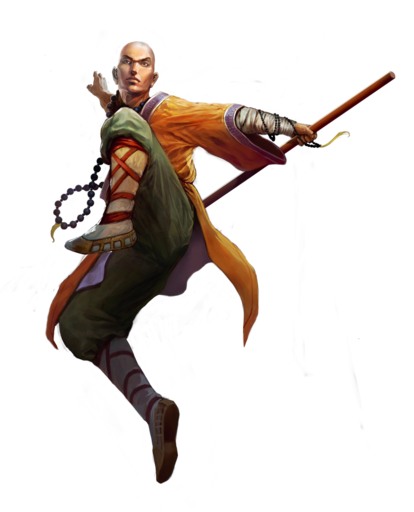
Rangers
A Ranger is extremely helpful in the wilderness of the valley, and training to be one has become a common prospect among explorers in New Ashe. Those who have lived in the valley are particularly useful, and Firbolgs, Aaracokra, and Half-Orcs are likely candidates for Ranger training.
In fact, those who wish to become a ranger must undergo some training with these races to truly master the ability to navigate the Valley. When you become a ranger, think about who your teacher was, and what sort of things they might have taught you about life in the Valley.
If you choose to become a Ranger, you might gain access to the Goodberry spell. Due to the nature of the exploration rules, the function of the Goodberry spell has been altered. You can use Goodberry to reduce the Supply Cost of a day by 1 gp, to a minimum of 0 gp.
Additionally, if you have a feature that prevents you from becoming lost, it means you may re-roll a random encounter if the roll results in you becoming lost. You must use the new roll.
Finally, if you have a feature that increases the amount of food you can harvest on a given day, it instead reduces your Supply Cost on a given day by 1 gp, to a minimum of 1 gp.
You may choose to use the Unearthed Arcana Revised Ranger or Spell-less Ranger. As a Ranger, you may choose from the following Subclasses:
Beast Master
(Player's Handbook Page 93) If you were trained by the Firbolgs, you can choose to become a Beast Master. Your animal companion is a creature native to the Valley of the Lords, which you must explore to find. You rely on your companion to move through the wilderness, and they are trained to fight by your side. However, they are still treated as a wild animal in New Ashe, and are not allowed within buildings or certain districts. You might be in New Ashe to foster relations between the Ashlen people and the natives of the Valley, or to teach them the kindness of nature.
Hunter
(Player's Handbook Page 93) If you were trained by an Aaracokra or Half-Orc, you can choose to become a Hunter. You see the wilderness as a dangerous place, but one you have learned to live in. You can choose to join the Ashlen Army, if you wish. You might be in New Ashe to help defend it from the terror of the Valley, or to complete a personal vendetta against the Orcs who ravaged it.
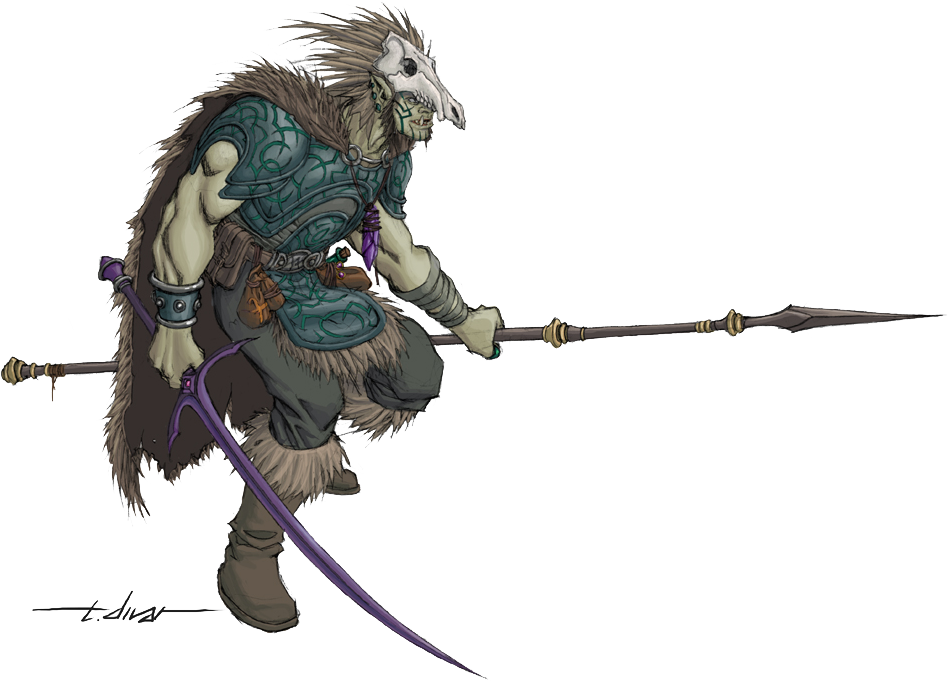
Rogues
A rogue could be in New Ashe for a number of reasons, none of them perfectly legal. Whether on the run from Ashlen Law, taking advantage of Whitikast Fourere's White Roses, or simply plundering some ancient tombs, you are here for your own reasons and looking for riches to line your pockets.
Rogues usually have some situation that lead them to operate on the wrong side of the law. Someone may have wronged you and gotten away with it, or perhaps you had to resort to breaking the law to survive. Think about what sort of person you are, that you would forsake the protection of the government of Ashlen.
Rogues are not required to join a faction, but if you wish to do so, the White Roses are the only faction that can really put your skills to use.
As a rogue, the following subclasses are available to you:
Assassin
(Player's Handbook Page 97) Your character has mastered the arts of disguise and silent murder. Think about why you might want to gain such skills. Is there someone you want to kill personally, or for a job? They might be in New Ashe or the Valley. Or, perhaps you've already killed someone and are fleeing from the law. Either way, your skill set will make those around you nervous if you show it off.
Scout
(Xanathar's Guide to Everything Page 47) You've learned to navigate the wilderness, but with more regard to hunting and survival than to caring for nature. Your character might have grown up in the wild, or been forced from their home by an Orcish invasion. Wherever you come from, though, your skills will be needed in New Ashe.
Swashbuckler
(Xanathar's Guide to Everything Page 47) You were once a pirate or sailor with a flair for the dramatic. But something happened to force you to leave that life, and come to the landlocked city of New Ashe. Perhaps you were captured and forced to do work to repay your debts, or you lost your ship and must now find the gold for a new one. In the meantime, however, you can gain your own "crew" among the explorers of the White Roses.
Thief
(Player's Handbook Page 97) As a thief, you are certainly on the wrong side of the law. The real question is what you are interested in stealing and why. Are you looking to take the nobility down a peg, Robin Hood-style? Then you might be in New Ashe to hide from the law, or to target these high-and-mighty faction leaders. Or perhaps it's riches you desire, in which case the promise of ancient tombs bursting with treasure will have drawn your attention. No matter what you choose, make sure it's something your rogue can find in New Ashe and the surrounding Valley.
Sorcerers
In Ashlen, sorcerers are considered blessed by the Gods with natural power. However, this "Blessing" is often destructive, chaotic, and causes the sorcerer to become outcast from civil society. In Ashlen, sorcerers operate on the fringes of civilization, sometimes being sought out as oracles of the Gods that granted them power.
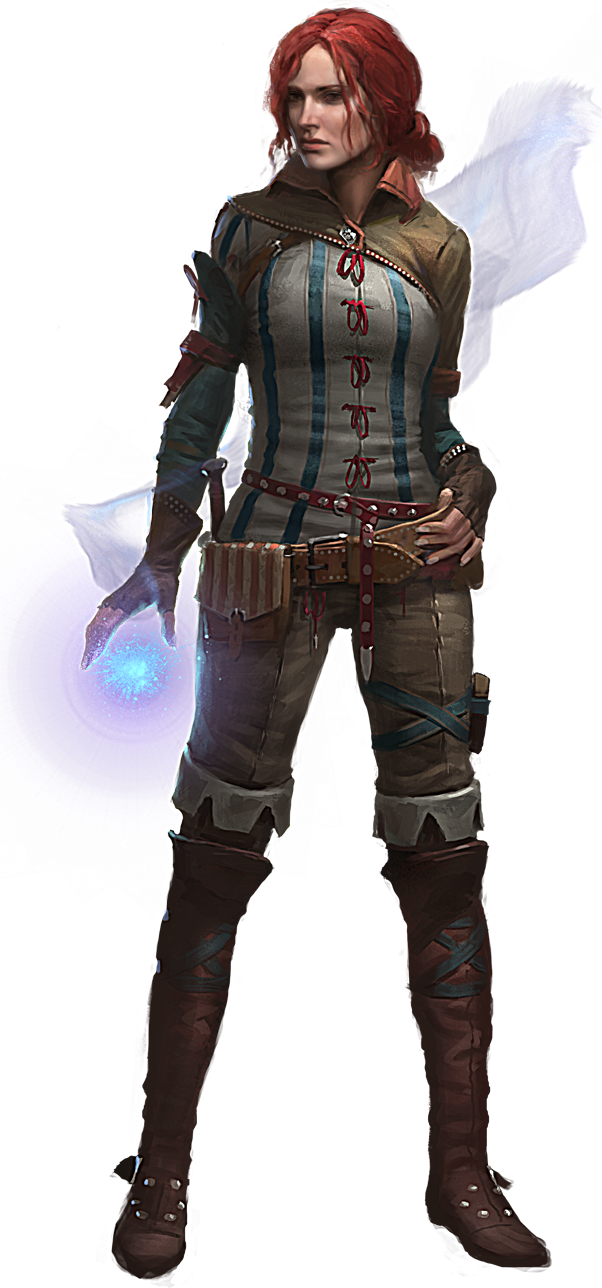
Of course, not all sorcerers actually have a conduit to the Gods. But even in New Ashe, they are treated with a mix of caution and reverence, lest the destructive magic they wield be unleashed on those around them. You could be in New Ashe for any reason, but you are only able to join one faction: the White Roses. Any other faction won't take the risk on you.
As a sorcerer, the following subclasses are available to you:
Divine Soul
(Xanathar's Guide to Everything Page 50) As a Divine Soul, you were chosen before birth by a God to spread their cause. You may select nearly any God to have given you this task, not just the ones worshipped in Ashlen. Your Divine Magic is based on the alignment of that God. You may not choose Olidammara or The Shadow. You are in New Ashe for a reason that is your own, but the powers granted by your heritage keep causing trouble for you. You might be trying to rid yourself of the powers, or looking for someone who can Commune with your God to see if the God can take the power back.
Shadow Magic
(Xanathar's Guide to Everything Page 50) Your powers were granted by The Shadow, a minor deity born in the swamps of Ashlen. The Shadow seeks to eliminate those who mar the lands around Ashlen, but it only has power at twilight. It chose you to extend its influence, a cause which you can choose whether or not to accept. If you do accept it, you might be in New Ashe to ensure the land returns to the unsullied state it once held before the Orcs and humans arrives. If you reject it, you could be in New Ashe for your own reasons, or to flee from the swamps where The Shadow has the strongest influence.
Wild Magic
(Player's Handbook Page 103) Your powers were granted to you by Olidammara. Why? Who knows. The God of Revelry is unpredictable and irreverent, and you might as well been an accident. You might be bitter about your powers or have begrudgingly accepted them, but Olidammara definitely hasn't told you why you are the way you are. You probably have your own reasons for being in New Ashe, and they likely have little to do with your powers.
Warlocks
Sorcerers are treated with trepidation in Ashlen, but Warlocks are truly feared. Those who have spoken to the beings on the other side of the veil, made a pact with them (whether or not it was purposeful), and draw power from them can command respect and hatred all at once from the citizenry of Ashlen.
Surprisingly, however, there is a place for Warlocks to study and control their powers in Ashlen. The Stone Scholars of Duzag Kar treat Warlocks with morbid fascination instead of revulsion, and their halls are open to those who have made Dark Pacts.
You have likely come to New Ashe to continue your studies into your unique powers, or to attempt to uncover something that will help you break the bond you share with an otherworldly being.
The Stone Scholars cannot help everyone who comes to their door, however. They have the resources to assist those who have the following patrons:
The Fiend
(Player's Handbook Page 109) You, who have made a deal with the devil, can come to Duzag Kar to better understand terms of the infernal contracts you have signed. There are Scholars devoted to each of the Archdevils of the Nine Hells, whom you would work with to learn more about your powers. For Asmodeus, there is a whole team of scholars and lawyers dedicated to deciphering his legendary decrees, but even then they usually fail to fully comprehend these agreements. To make a deal with the Lord of Baator is to take you soul into your own hands.
The Great Old One
(Player's Handbook Page 109) Duzag Kar would have to turn you down if not for the tireless work of Professor H.R. Mockstone, himself a Warlock of the Old Ones. He has strained his mind nearly to the breaking point in order to learn more about the ancient and terrible beings that grant you and him power. He can read any tome and understand any language, and sometimes assigns his students tasks that have no clear meaning but seem to quell the angry stirrings of their patrons. Perhaps he has assigned you such a quest in New Ashe.
The Hexblade
(Xanathar's Guide to Everything Page 55) Ashlen being a country that worships the Raven Queen for their funeral rites, there are more than a few Hexblades that find their way into the hands of Ashlen citizens. The Scholars of Duzag Kar can help you speak to the being in your blade, understand its wishes, and hopefully allow the two of you to live symbiotically, rather than parasitically. They often send their students on mission to learn the origins of the blade they wield, to better understand its properties and desires.
Wizards
Ashlen is a martial nation, and mastery of magic is not a common pursuit among commoners. Most people would rather have the immediacy of a blade than try to hone magical energy for long years. But the dwarves of the Stone Scholars know better.
To a dwarf, the time needed to take control of magic is not long at all. A decade of life studying is a pittance in comparison to the power arcane control can bring. They are a primary source for spell research, magic items, and spellbooks in Ashlen.
Since arriving in New Ashe, the Scholars have begun to take non-dwarfs into their ranks in order to expand their numbers and ensure they accomplish everything they need to before the Valley is overrun by soldiers. You might be a new recruit, conscripted in New Ashe, or a dwarven veteran of the Scholars here with your companions.
The Dwarves are accomplished mages and can provide instruction in any of the following Schools of Magic:
- Abjuration (Player's Handbook Page 115)
- Conjuration (Player's Handbook Page 116)
- Divination (Player's Handbook Page 116)
- Enchantment (Player's Handbook Page 117)
- Evocation (Player's Handbook Page 117)
- Illusion (Player's Handbook Page 118)
- Transmutation (Player's Handbook Page 119)
- War Magic (Xanathar's Guide to Everything Page 59)
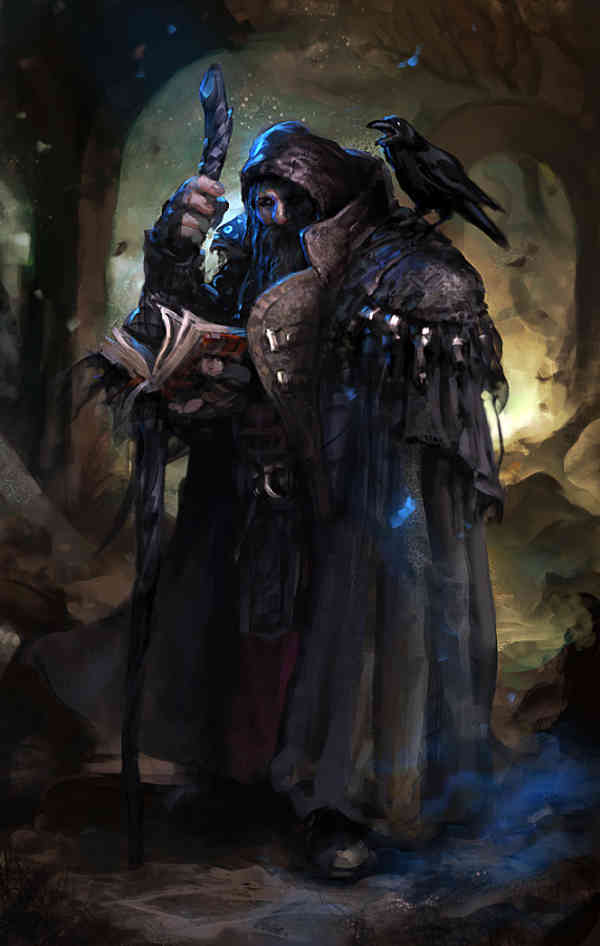

Chapter 3
Exploration Rules
In this chapter you will find the rules used to explore the Valley of the Lords. It is recommended you familiarize yourself with them, if you wish to set out upon a quest of your very own.
Exploring A Hex
Each hex on the map is 6 miles across. You can travel through up to four hexes in a day, if they have been already been traveled through and Discovered. If you enter an Unknown hex, you must stop your day's travel.
Hex Status
A Hex can be Unknown, Discovered, Conquered, Settled, or Pillaged.
- Any hex that has not been entered or does not have a visible feature in it is Unknown.
- Any hex that has been seen or entered has been Discovered.
- Once a hex has every entry on its Random Encounter Table and Discovery Table revealed, the hex becomes Conquered. A Conquered hex can provide Resources.
- If a Conquered hex is surrounded by enough resources, it can be Settled.
- A Settled hex can be Pillaged by an enemy force, requiring time and Resources to restore. It is also possible for a settlement to be so damaged that the Hex returns to Unknown status.
At the start of the campaign, you will begin in New Ashe, known as your Base of Operations. This counts as Settled territory.
The map will be mostly Unknown, but some sites might already be Discovered at the beginning of the game. If a landmark or feature is within a certain distance of your Base of Operations, you can see it and automatically discover it. This assumes that no other features are blocking your line of sight to the feature. In such a case, only the visible feature will be Discovered.
| Feature | Discoverable Distance |
|---|---|
| Large Ruins and Castles | Adjacent Hex |
| Rivers and Lakes | Adjacent Hex |
| Oceans | 2 Hexes |
| Hills and Forests | 2 Hexes |
| Mountains and Volcanoes | 5 hexes |
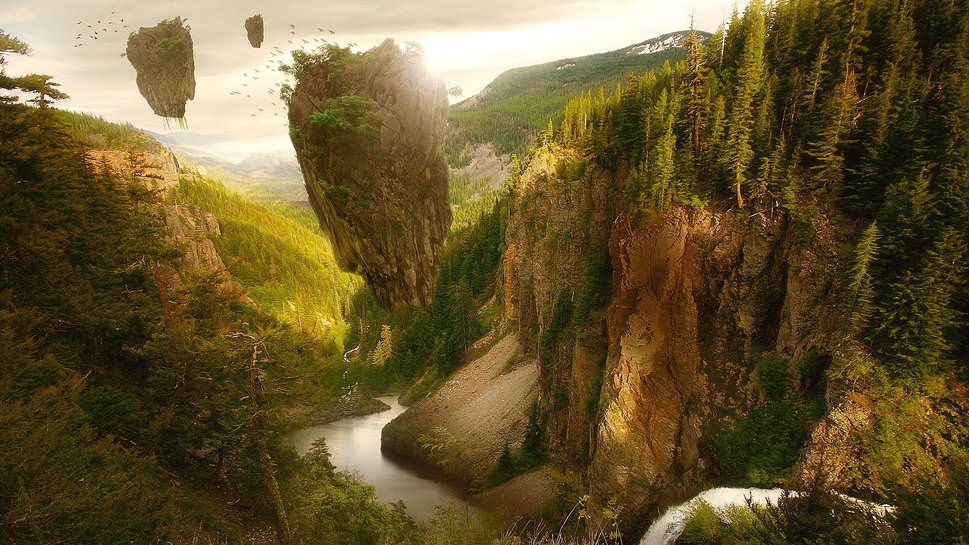

Hex Properties
When a Hex becomes Discovered, four of its properties are immediately revealed.
Discovery Time
This a ranking of how difficult it is to travel through the hex. For areas such as grasslands, hills, or coasts, this value is 1. For more complex areas such as forests, mountains, or the Underdark, it is 2. A value higher than 2 is rare and will be reserved for extremely dense or hostile environments.
The Discovery Time is equal to the amount of days required to explore the hex. It also correlates with the amount of time needed to travel through the hex. Thus, a party can only cover two hexes per day in a forest, as opposed to 4 per day in open grasslands.
Heavy weather, such as thunderstorms or blizzards, increase the Discovery Time of all hexes by 1.
Danger Ranking
This determines how dangerous the monsters in this area are. If a hex is simply being traveled through or explored, each creature in the party must pay an amount of hit points equal to the Danger Ranking. If a creature cannot pay the hit point cost and remain above 0 hit points, they must wait until the next day or return to their Base of Operations.
If multiple hexes are being traveled through on a single day, the creature must be able to pay the hit point cost of each hex and remain above 0 hit points to complete their journey.
| Terrain | Danger Ranking | Average Monster CR |
|---|---|---|
| Settled Territory Barren Lands |
0 HP | 1/8 |
| Conquered Territory Open Frontier Quiet Wilderness |
5 HP | 1/2 |
| Dangerous Frontier | 10 HP | 1 |
| Enemy Territory | 15 HP | 2 |
| Deadly Wilderness Inhospitable Lands |
20 HP | 3 |
| Pillaged Territory Enemy Patrols |
25 HP | 4 |
| Unearthly Lands | 50 HP | 5 |
Weather that directly damages the party, such as hail or acid rain, can increase the Danger Ranking of a hex. If the party is able to travel by flight, the Danger Ranking of the hex is halved as long as they are simply passing through. If they end the day in the hex or wish to spend time exploring it, they must land and pay the full hit point cost.
Supply Cost
This determines the cost of food, supplies, and repairs due to travel. If a character cannot pay the Supply Cost on a given day, they begin to starve. At the end of each day without paying the Supply Cost, the character automatically suffers one level of exhaustion, and cannot recover levels of exhaustion until the Supply Cost is paid.
Unlike the Danger Ranking, if a character travels through multiple hexes on a single day, they only need to pay the Supply Cost for the hex with the highest gold requirement.
| Terrain | Supply Cost |
|---|---|
| Settled Territory Conquered Territory |
1 gold |
| Forests Coasts Verdant Regions |
2 gold |
| Grasslands Swamps Oceans |
3 gold |
| Tundras Mountains The Underdark Desolate Regions |
5 gold |
| Deserts Barren Regions |
7 gold |
Weather does not affect the Supply Cost of a hex, but certain spells and abilities can.
| Feature | Effect |
|---|---|
| Outlander/ Ranger |
Reduce Supply Cost for self by 1 gold, to a minimum of 1 gold. |
| Goodberry | Reduce Supply Cost for self by 1 gold, to a minimum of 0 gold. |
| Locate Animals or Plants Locate Creature |
Reduce Supply Cost for any party member by 1 gold, to a minimum of 1 gold. |
| Create or Destroy Water | Reduce Supply Cost for any party member by 5 gold. Can be distributed. No individual's Supply Cost can go below 1 gold due to this spell. |
| Create Food and Water | Reduce Supply Cost for any party member by 10 gold. Can be distributed. No individual's Supply Cost can go below 1 gold due to this spell. |
Resources
Once it is Conquered, a hex can provide one of three types of resources: Food, Construction, or Defense. These are determined by the DM and not related to the type of terrain the hex contains.
For example, a Forest might be good for logging (Construction), hunting (Food), or might have some primordial magic to ward the area from attack (Defense). A mountain could be home to many birds (Food), have good stone for building homes (Construction), or have a mine that produces iron for swords and armor (Defense).
At the DM's discretion, a hex may produce 2 of a particular resource. This will be extremely rare. For example, a lake might be enchanted to never run out of fish, and produce 2 Food resources instead of 1.
Resources are used in the creation and growth of settlements, and provide the means by which those settlements defend themselves from attack. Building and defending settlements is covered in a later section.
Hex Tables
In addition to the hex's four properties, a hex has two tables associated with it that are not not entirely revealed when it becomes Discovered.
Random Encounter Table
The Random Encounter Table shows the type of monsters explorers might encounter as they travel through a given hex.
The number of entries on the table, like the Discovery Time property, correlates to the complexity of the terrain in the area. Open areas might have 4 or 6 entries, while more complex terrain could have 10 or 12 entries.
In an unknown area, there will only be one type of entry on the table: Become Lost. Each time the hex is traveled through and the Danger Ranking cost is paid by a group, one entry on the table is revealed to the party. Thus, the hit point cost paid by the party correlates to the monster they encountered.
The Random Encounter Table is revealed in order from least to most challenging encounters. As explorers search an area, they have less chance of becoming lost and more chance of finding a rare and dangerous beast in their way. However, revealing entries does not affect the hit point cost of simply passing through an area.
Discovery Table
The Discovery Table is a list of Adventure Sites within a given hex. This could be a natural cavern, an ancient ruin, a village or NPCs, or anywhere else a party would need to take time to explore.
The Discovery Table will always have 12 entries on it, but only two to four of them will actually list an Adventuring Site. The others will be marked Nothing, or have a small flavorful encounter such as finding the grave of a fallen warrior or a particularly shady apple tree.
When a group ends their day in a hex, they may roll on the discovery table if time has passed equal to the hex's Discovery Time. The first day in a hex always counts as a roll on the Discovery Table. The die rolled begins as a d4 and increases in size for each roll the party makes, up to a d20. Each day, the group must continue to pay the Supply Cost and the hit point cost of the hex. If the group leaves the hex, the die reverts to a d4.
When the Discovery Table is rolled on, all entries on the table with a number equal to or less than the die roll are revealed. This allows the characters to explore any of the Adventuring Sites they have found. Harder-to-find sites will be placed higher on the table, requiring more days of searching to find.
By exploring the area around an adventure site, you can determine what level of challenge the site poses to your party. You'll want to bring someone with the necessary skills to identify the type of creatures that might be hidden within the Site. If any member of a party exploring the hex has a skill modifier (Ability Score Modifier + Proficiency Bonus if applicable) equal to or greater than the challenge level of the Site, that challenge level is revealed.
| Type of Site | Relevant Skill |
|---|---|
| Wizard Homes Magical Monster Dens Magical Locations Spells |
Intelligence (Arcana) |
| Humanoids Ancient Ruins Legendary Objects Weapons and Armor |
Intelligence (History) |
| Beasts and Plants Natural Caverns Hunters or Druids Poisons |
Intelligence (Nature) |
| Undead Desecrated Sites Fiends and Unholy Monsters Elementals Fey |
Intelligence (Religion) |
| Active Settlements Mysteries |
Intelligence (Investigation) |
For example, if a cavern is designed for level 4 characters, a party would need someone with a +4 modifier to their Intelligence (Nature) skill to determine the challenge level of the site. Otherwise, they simply see signs that it is dangerous, but they don't know exactly how dangerous. Any group that travels through a hex with a known Adventure Site can assess its danger level.
Finally, the following spells can affect the Discovery Roll.
| Spell | Effect |
|---|---|
| Arcane Eye | By sending the eye upwards, you reveal all sites ranked 4 or lower on the table, provided they are visible from the sky. |
| Divination | Pick a number between 1 and 12. That entry is revealed to you. |
| Commune | Pick 3 numbers between 1 and 12. Those entries are revealed to you. |
| Contact Other Plane | Pick 5 numbers between 1 and 12. Those entries are revealed to you. |
| Legend Lore | If there are any Adventuring Sites in this hex suitable for characters of level 7 or higher, they are revealed to you. |
| Find the Path | When you cast this spell, name a specific Adventuring Site. The site is revealed, and you know what hex it is in, no matter where it is. This doesn't change the hex's status. |
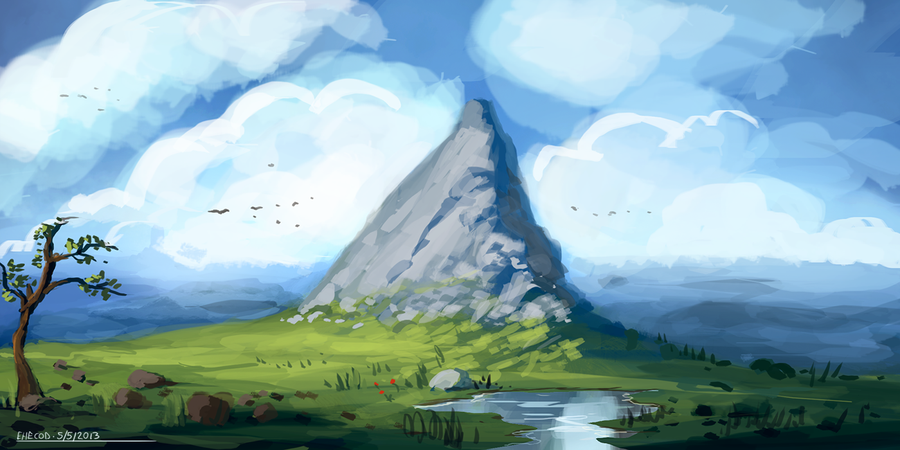

Example Exploration
Let's say we have a forest hex we want to explore. On the first day, we arrive in the hex and find out its properties:
| Discovery Time | 2 |
| Danger Ranking | 5 HP |
| Supply Cost | 2 gold |
| Resources | Food |
So we have to pay 5 hit points and 2 gold per character in the party. We also reveal the first entry on the Random Encounter Table, which is wolves.
Since we are ending the day here, we get to roll a d4 on the Discovery Table. We get a 3, revealing the three lowest entries on the Discovery Table. It's Nothing, a burnt down tree, and an Adventure Site labeled "Wolf Den". The Ranger in the party has an Intelligence (Nature) modifier of +4, so they easily determine the Wolf Den is built for a party of Level 2 Adventurers.
On the second day, we have to pay 5 hit points and 2 gold, and reveal the second entry on the Random Encounter Table, which is Constrictor Snakes. Since the forest has a Discovery Time of 2, we don't get to roll on the Discovery Table today.
On the third day, we pay 5 hit points and 2 gold per character, and reveal the next entry on the Random Encounter Table. It's a Brown Bear, but this doesn't necessarily mean we fought a Brown Bear that day. We may have simply seen signs of its existence.
Now that 2 days have passed, we can roll the Discovery Die at the end of the day. Since it is our second roll, the die increases to a d6, which rolls a 4. The 4th entry on the Discovery table is revealed, which is Nothing. At this point, we can continue to spend gold to explore the forest, or leave, or enter the Wolf Den.
Adventure Sites
An adventure site is where your character will find gold, monsters, and experience. You find an Adventuring Site by exploring a hex and rolling on the Discovery Table. Once you've found a site, you mount an expedition to uncover its treasures!
Preparing for Adventure
Exploring an adventure site takes a full day. You need to set up a base camp, rest up, resupply, and sometimes hike a few miles from your campsite to even get there. Nobody wants to sleep right outside a Troll Cave, after all.
On the day your begin your adventure, you must pay the Supply Cost for the hex you are in, but you do not have to pay any hit points. Instead, you roll on the Random Encounter Table to determine what happens to you before you enter the site.
If you roll Become Lost, you lose your way while traveling to the site. You must immediately pay the hit point cost of the hex, and the day ends as you return to camp. Because you paid the hit point cost, another entry on the Random Encounter Table is revealed. You can attempt to find the Adventure Site again the next day, with improved chances.
If you have an Outlander or a Ranger with a feature that prevents you from getting lost in your party, you may re-roll the encounter instead of becoming lost. If you do so, you must keep the new roll. You may only re-roll the die once, no matter how many Outlanders or Rangers are in your group.
Additionally, the following spells can affect the random encounter roll.
| Spell | Effect |
|---|---|
| Augury Divination Commune |
Re-roll the Random Encounter. You must keep the new roll. |
| Find the Path | Ignore the Random Encounter and enter the Adventuring Site. |
| Pass Without Trace | If the Random Encounter was a monster, you may re-roll the random encounter. If the new roll is Become Lost, you instead find the Adventuring Site. Otherwise, you must keep the new roll. |
If you rolled a monster on your random encounter, you must defeat it or bypass it to reach the Adventuring Site.
In the Site
An average Adventuring Site will feature two or three combat encounters, or just as many social encounters. It should take approximately two hours of real time to explore and clear.
Monsters in adventuring sites will drop loot. This loot can be crafted by a character with skill in a particular tool into a magic item. Magic items might also be found in ancient ruins, but natural caverns generally won't have them.
Finally, adventuring sites will grant those who clear them experience points. One experience point can be earned by completing each of the following goals:
- Fully Exploring the Site (unless site is 2 level lower than character)
- Finishing a Quest Associated with the Site
- Fully exploring a site 2 or more levels higher than character
Some sites may have multiple quests associated with them and can provide several experience points.
A character levels up based on the following table. If you are a member of a faction, this corresponds to your rank in the faction. Once you reach level 11, you become a respected figure in the Valley, and can easily sway any of the faction leaders. You can also start your own faction if you wish.
No matter when you earn experience points, you can only level up at your Base of Operations.
Experience and Faction Ranks
| Character Level | EXP Needed to Level | The Ashlen Army | The White Roses | The Church of Pelor | The Stone Scholars |
|---|---|---|---|---|---|
| 1-5 | 4 | Soldier | Mercenario | Missionary | Scholar |
| 6-10 | 8 | Sergeant | Professionale | Priest | Adept |
| 11+ | 12 | Major | Condottieri | Bishop | Professor |
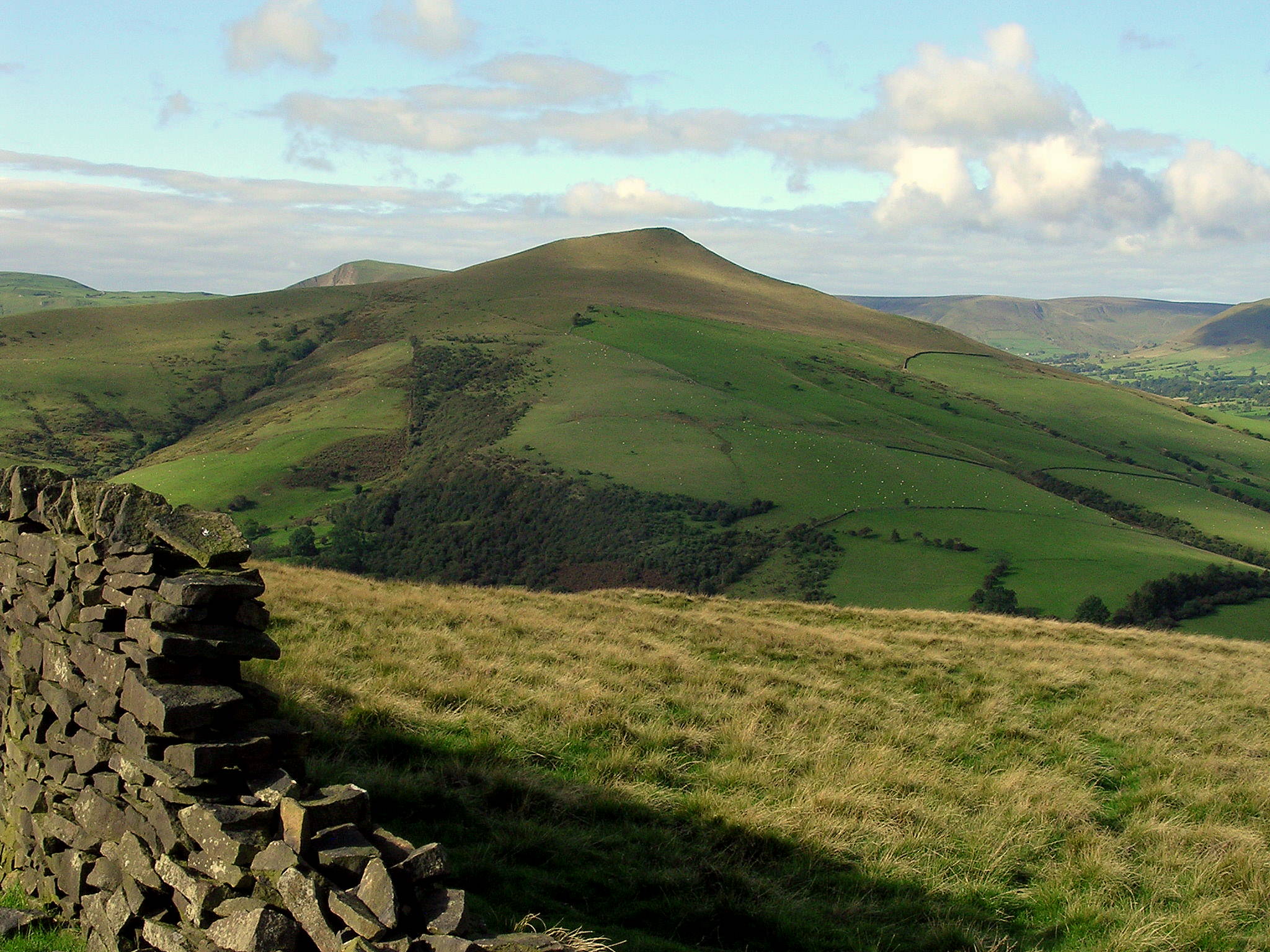

Increasing Encumbrance Load
| Item | Capacity | Animals Required | Other Requirements | Price |
|---|---|---|---|---|
| Carriage | 3 EP | 2 | - | 100 gp |
| Cart | 1 EP | 1 | - | 15 gp |
| Sled | 2 EP | 2 | Snow or sand only | 20 gp |
| Wagon | 2 EP | 2 | - | 35 gp |
| Heward's Handy Haversack | 2 EP | - | - | 2000 gp |
| Bag of Holding | 3 EP | - | - | 4000 gp |
| Portable Hole | 4 EP | - | - | 8000 gp |
After the Adventure
Once you have cleared out an Adventuring Site, it's time to haul back the food, loot, treasure, and historical artifacts you've collected.
When you clear an Adventuring Site, every humanoid character (PCs and NPCs) in the party gains 1 Encumbrance Point (EP). You can carry a number of EP equal to your Strength score divided by 3, rounded down. Since EP represents things you are carrying out of the dungeon, you can distribute them to other characters.
Purchasing certain items can increase your group's EP Capacity, but many of these items require animals to use, as shown above. Animals do not gain EP upon completing an Adventuring Site, but they do increase the group's Supply Cost per day by a certain amount. Animals must also pay hit points equal to half the Danger Ranking of any hex they pass through, meaning certain animals are more suited to wilderness travel than others.
| Animal | Hit Points | Supply Cost | Price |
|---|---|---|---|
| Camel (Hot Climate) | 15 | 2 gp/day | 50 gp |
| Camel (Other Climate) | 15 | 4 gp/day | 50 gp |
| Donkey/Mule | 11 | 2 gp/day | 8 gp |
| Elephant* | 76 | 10 gp/day | 100 gp |
| Draft Horse | 19 | 2 gp/day | 50 gp |
| Riding Horse | 13 | 1 gp/day | 75 gp |
| Mastiff | 5 | 1 gp/day | 25 gp |
| Pony | 11 | 1 gp/day | 30 gp |
| Warhorse^ | 19 | 4 gp/day | 400 gp |
*An Elephant counts as two animals
^A Warhorse is trained as a combatant, and its price includes such training
Settlements
Once you have explored the Valley of the Lords for a bit and Conquered a few hexes, you might want to start considering making a settlement, or expanding New Ashe.
A Settlement requires a certain number of Conquered hexes to support its population. These hexes must provide the right mix of resources to support the Settlement, or you won't be able to get things started. There are three types of resource a hex can provide: Food, Construction, or Defense. A hex's resource is determined by the DM, not by the terrain or sites within the hex.
Settlement Requirements
| Size | Food | Construction | Defense | Build Time | Starting Level |
|---|---|---|---|---|---|
| Outpost | 1 | 0 | 0 | 1 Week | 1 |
| Village | 1 | 1 | 0 | 1 Month | 2 |
| Town | 2 | 2 | 2 | 10 Months | 3 |
| City | 5 | 3 | 3 | 1 Year | 5 |
| Metropolis | 10 | 5 | 5 | 10 Years | 7 |
New Ashe is considered an Outpost. Any hex with a food resource is considered Settled once it is Conquered, as a new Outpost springs up over the course of a week. If you wish to convert an Outpost to a Village, the process takes an additional week, to bring the total build time to 1 month.
When the you have Conquered enough hexes in the same area, they can choose to begin construction on a settlement. This process does not cost gold, but it does cost time as the construction takes place. The resources required to build the settlement must be adjacent, and the Settled territory must be in one of them. The resources used by a settlement are referred to as its Area of Influence.
Once construction begins, the settlement grows in accordance to the build times above. So if you wish to build a Town, it will look like an Outpost after a week, a Village after another month, then finally a Town after 10 months. Additionally, characters created in a settlement may start at the level listed in the table.
Attacked Settlements
Any Settlement can be attacked by monsters if they band together in large enough numbers. If your party is in the Area of Influence of an attacked settlement, you will hear about the attack right away. Otherwise, news of the attack will arrive in New Ashe 1 day after the attack begins.
Groups of monsters that can attack settlements are generally too large to fight as a group of adventurers, but if you wish to fight them head on, you may do so.
In a pillaging, a monster army uses Siege Points (SP) to determine its attack power and ability to pillage. Siege points are determined by dividing the attackers up by size, adding up the total hit points in each size group, then dividing by the values in the table below. Each group's SP should be rounded down, then all SP are totaled to get the army's total SP.
Siege Point Calculations
| Monster Size | 1 SP per... |
|---|---|
| Gargantuan | 25 HP |
| Huge | 50 HP |
| Large | 100 HP |
| Medium | 200 HP |
| Small | 500 HP |
Thus, if a settlement was attacked by 100 Goblins and an Ancient Red Dragon, you would calculate the SP of the attackers as follows.
- The Goblins have 7 hit points each for a total of 700 hit points, and they are small creatures.
- The Ancient Red Dragon has 546 hit points and is the only gargantuan creature.
- 700 divided by 500 is 1.4. Rounded down, the Goblins provide 1 SP.
- 546 divided by 25 is 21.84, which is rounded down to 21 SP for the Ancient Red Dragon.
- Thus, the army has a total of 22 SP.
Fighting Back
A settlement defends itself with its resources. When the attack begins, each Resource within the settlement's Area of Influence is gathered up to defend the settlement. Any adjacent resources can be used to defend a settlement, as long as they are within 3 hexes of the settlement itself. If an adjacent hex is conquered while a settlement is being attacked, it is not added to the settlement's pool of defenses.
Each resource has a purpose.
Construction represents the ability of the settlement to withstand damage dealt to it. At the end of each day of an attack, the settlement loses a number of resources equal to the Siege Points of the attackers minus the Construction resources the village still holds. The damage calculation is done before the settlement loses its resources and the attacker loses siege points.
Defense represents the ability of the settlement to strike back at an enemy. At the end of each day of an attack, the attacker loses a number of Siege Points equal to the settlement's Defense resources remaining. The damage calculation is done before the settlement loses resources and the attacker loses Siege Points.
Finally, Food represents the settlements reserve of resources. They are not used in combat, but if a settlement reaches 0 Food resources, they can no longer deal damage and begin to lose 2 resources automatically each day.
If you are present in the hex that contains the settlement, you can choose to act as a Construction or Defense resource. You must choose which resource you are representing when the attack begins, or when you enter the settlement for the first time during an attack. In this way, you can ensure the settlement keeps up their attack or presses their defense, but you do not count as a resource when determining if the village has been Pillaged.
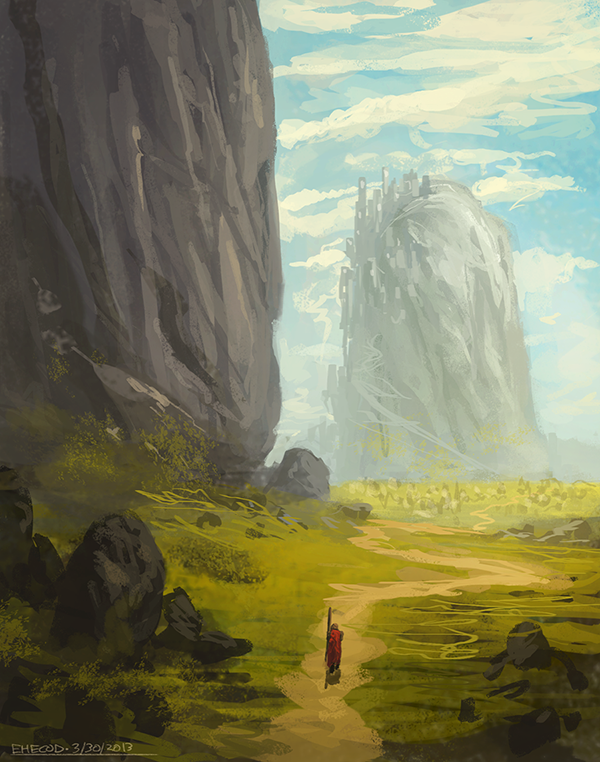

Pillaged Settlements
If the attackers are reduced to 0 Siege Points, they are defeated and retreat. Any resources the settlement lost can be reclaimed at a rate of 1 per week, as long as it has at least 1 natural resource remaining. PCs do not count towards natural resources.
If the settlement has lost all of its natural resources, it is Pillaged. Every hex that was used as a resource in the battle becomes Unknown once again, and the DM repopulates the Random Encounter Table of each hex to include the attackers or their servants.
To reclaim the hexes, you will need to re-explore them and reveal the Random Encounter Table once again. However, the hex that contained the settlement is now Pillaged, with a Danger Ranking of 25 HP and a new entry on its Discovery Table: the ruins of the settlement. In order to reclaim this hex, you must delve this dungeon and defeat the monsters that attacked the settlement.
Example Attack
Let's say a squadron of Orcs attacks one of our Towns.
As a reminder, a Town requires at least 2 Food, 2 Construction, and 2 Defense resources. Let's assume this is what we have available for our Town. Meanwhile, the Orcs number 70 and have 15 hit points each, giving them 5 Siege Points (15 x 70, divided by 200 since they are medium creatures, and rounded down).
On the first day, the Orcs attack. If there are any characters within the Town's Area of Influence, they hear about the attack immediately and would be able to ride to the Town's rescue. However, let's assume they aren't around.
The Orcs would deal 5 damage to the Town, reduced by 2 due the Town's Construction resources. The Town, meanwhile, would deal 2 damage to the Orcs due to its Defense resources. At the end of the day, the Orcs have 3 SP remaining, and the Town has lost 1 Food, 1 Defense, and 1 Construction resource. The Town doesn't have to lose its resources evenly, but it is choosing to.
On the second day, word reaches New Ashe of the attack. But this Town is quite distant, and let's assume no characters can make it out to the Town's defense. The Orcs deal 3 damage to the town, reduced by 1 due to the Town's Construction. The Town deals 1 damage to the Orcs due to their Defenses. The Orcs have 2 SP remaining, but the Town is down to 1 Food resource. They chose to keep the Food because if they had dropped to 0 Food, they would have lost 2 Resources and been overrun.
On the third day, assuming no heroes come to its aid, the Town falls as it has no resources to protect itself from the Orcs. The resource hexes become Unknown, and the Town's hex becomes Pillaged.
Instead, let's say a pair of explorers were in the area and were able to come to the town's aid on the second day.
The characters arrive in town. One raises up a militia to add 1 to the Town's Defense score, and the other barricades the walls to add 1 to the town's Construction score. Now, at the end of the day, the town loses only 1 resource, which they elect to be Defense. Meanwhile, the Orcs lose 2 Siege Points, putting them at 1 SP remaining.
On the third day, the Orcs have 1 SP, while the village has 1 Food, 1 Defense, and 2 Construction resources. They easily rout the remaining Orcs, who retreat back into the wilderness. The day has been saved!
Image Credits
- Cover: https://frankatt.deviantart.com/art/Winter-Is-Gone-421275223
- Page 2: http://conceptartworld.com/artists/derk-venneman/
- Page 6: https://jasontn.deviantart.com/art/Leader-of-the-Light-342174188
- Page 8: https://daroz.deviantart.com/art/Orc-Archers-Squad-343491633
- Page 9: https://eilidh.deviantart.com/art/Eowyn-718011855
- Page 10: https://www.artstation.com/artwork/GDBBz
- Page 13: http://roboteyetheater.com/books/
- Page 15: http://dnd.wizards.com/
- Page 16: Unknown (if you recognize, please let me know!)
- Page 17: http://dnd.wizards.com/
- Page 18: Unknown (if you recognize, please let me know!)
- Page 19: http://www.thewitcher.com/
- Page 20: https://www.artstation.com/artwork/aLGvq
- Page 21: Unknown (if you recognize, please let me know!)
- Page 23: https://ehecod.deviantart.com/art/Placid-Pond-369790149
- Page 25: https://en.wikipedia.org/wiki/Lose_Hill
- Page 27: https://ehecod.deviantart.com/art/On-A-Quest-362432546
- Credit Page: https://fullmetal-angelo.deviantart.com/art/Fantasy-Landscape-concept-art-428461248
- Watercolor Stains: http://homebrewery.naturalcrit.com/share/SkKsdJmKf
